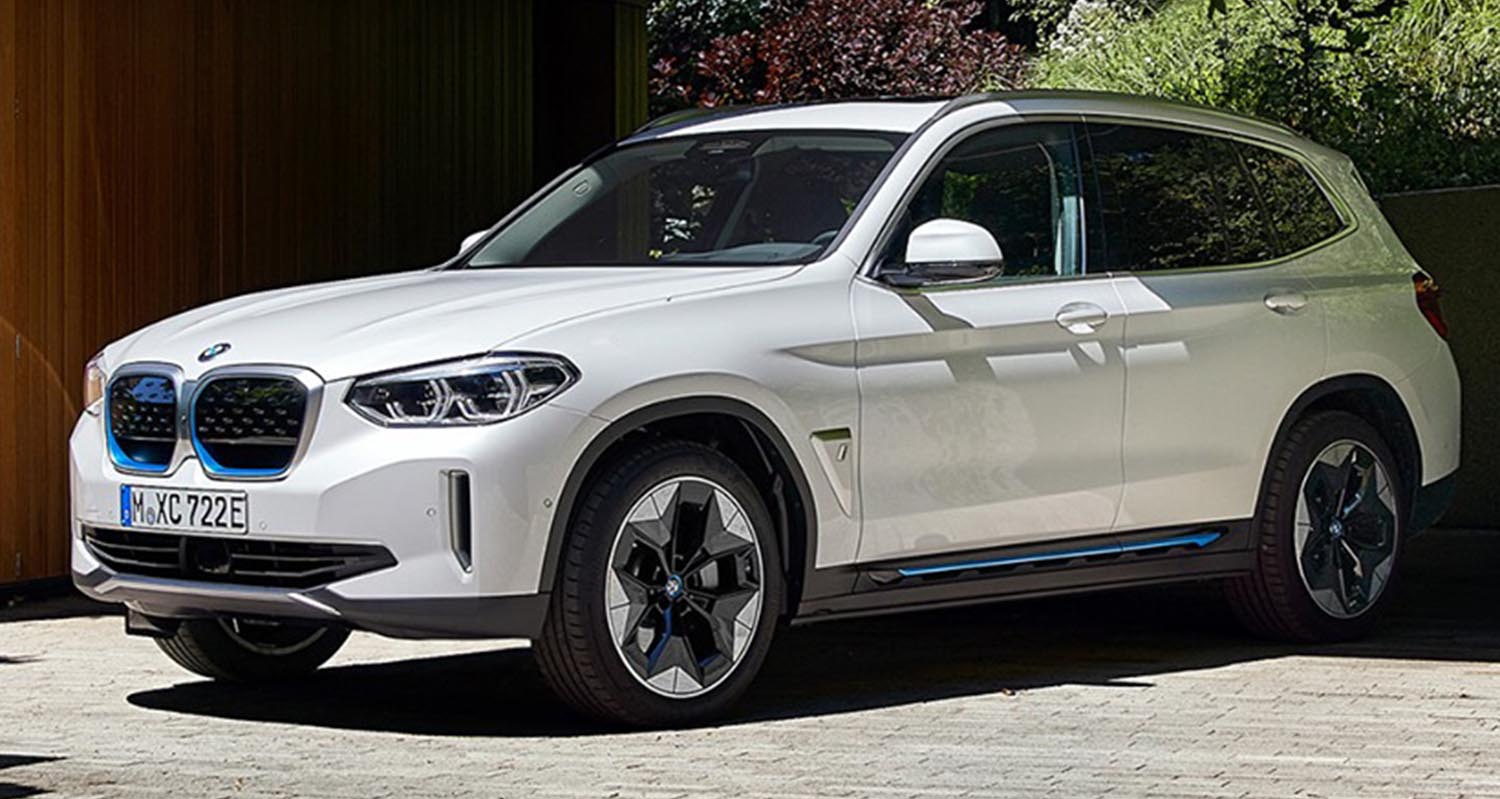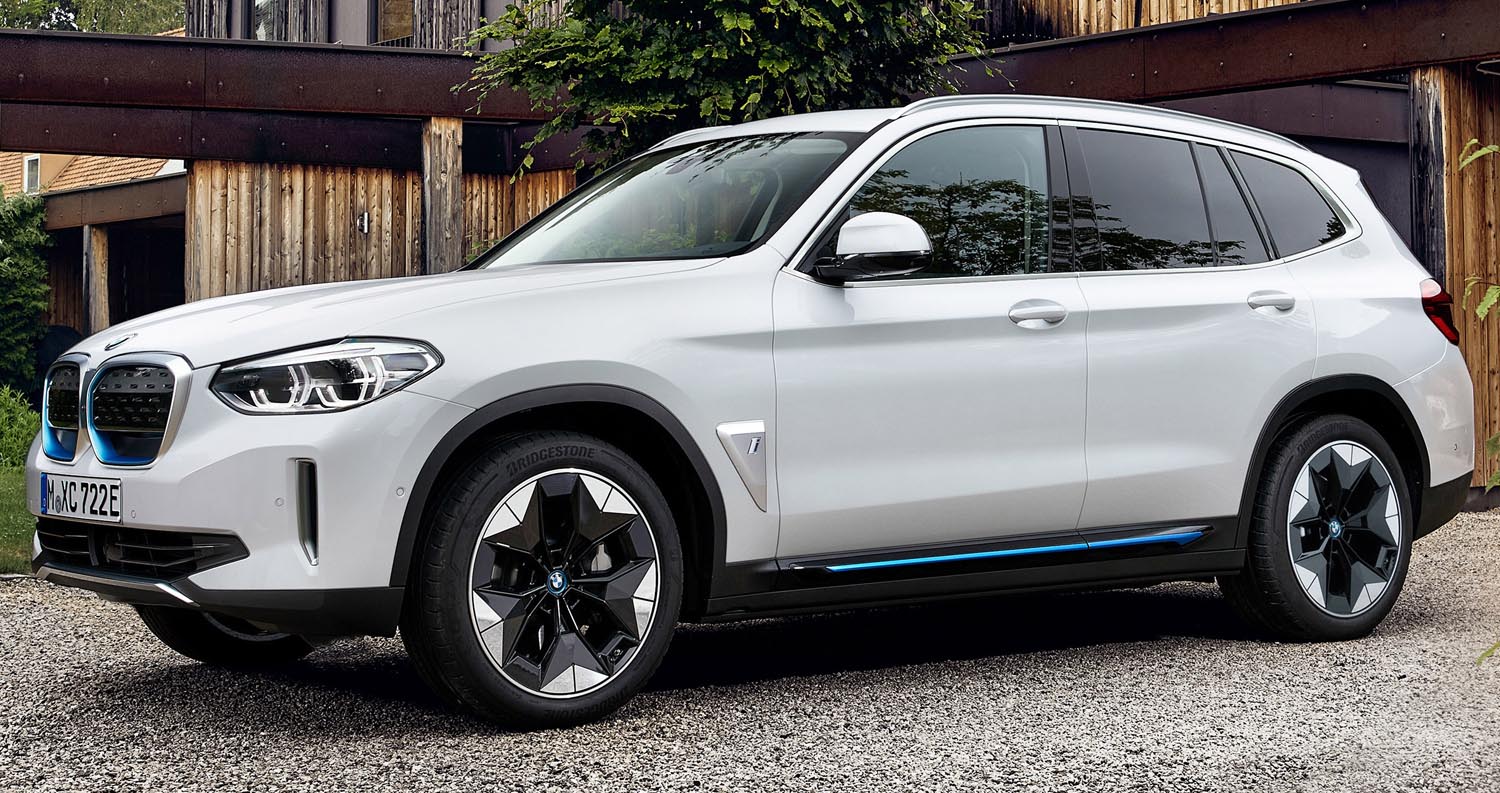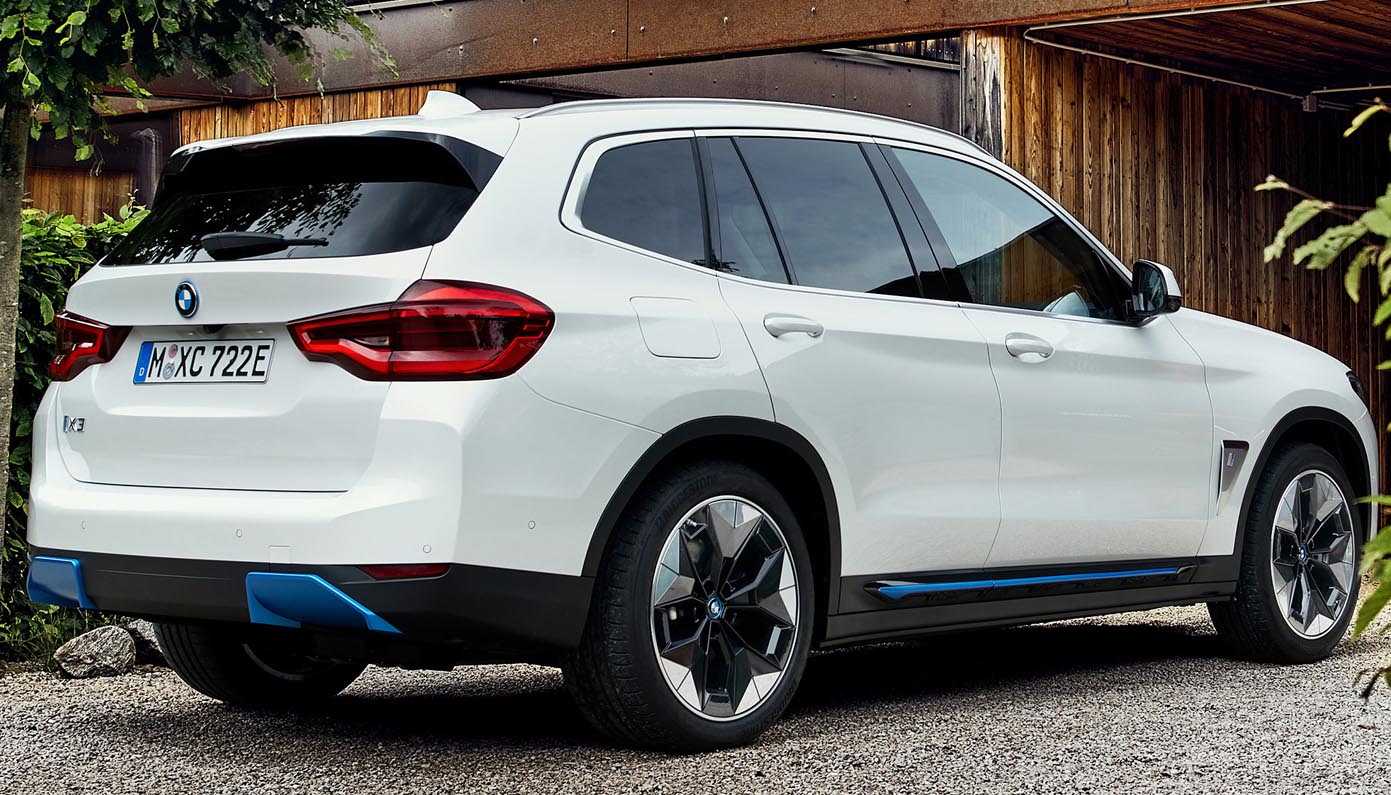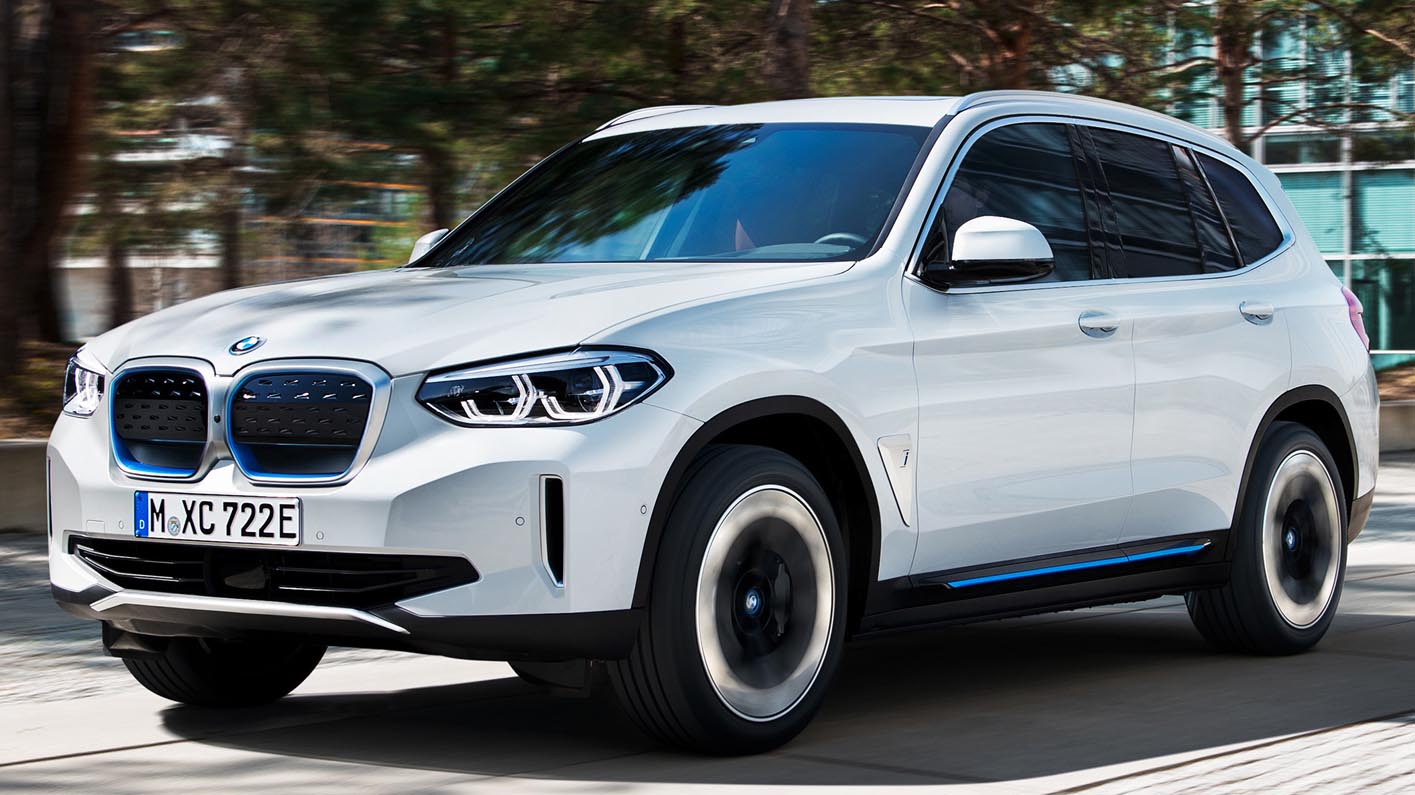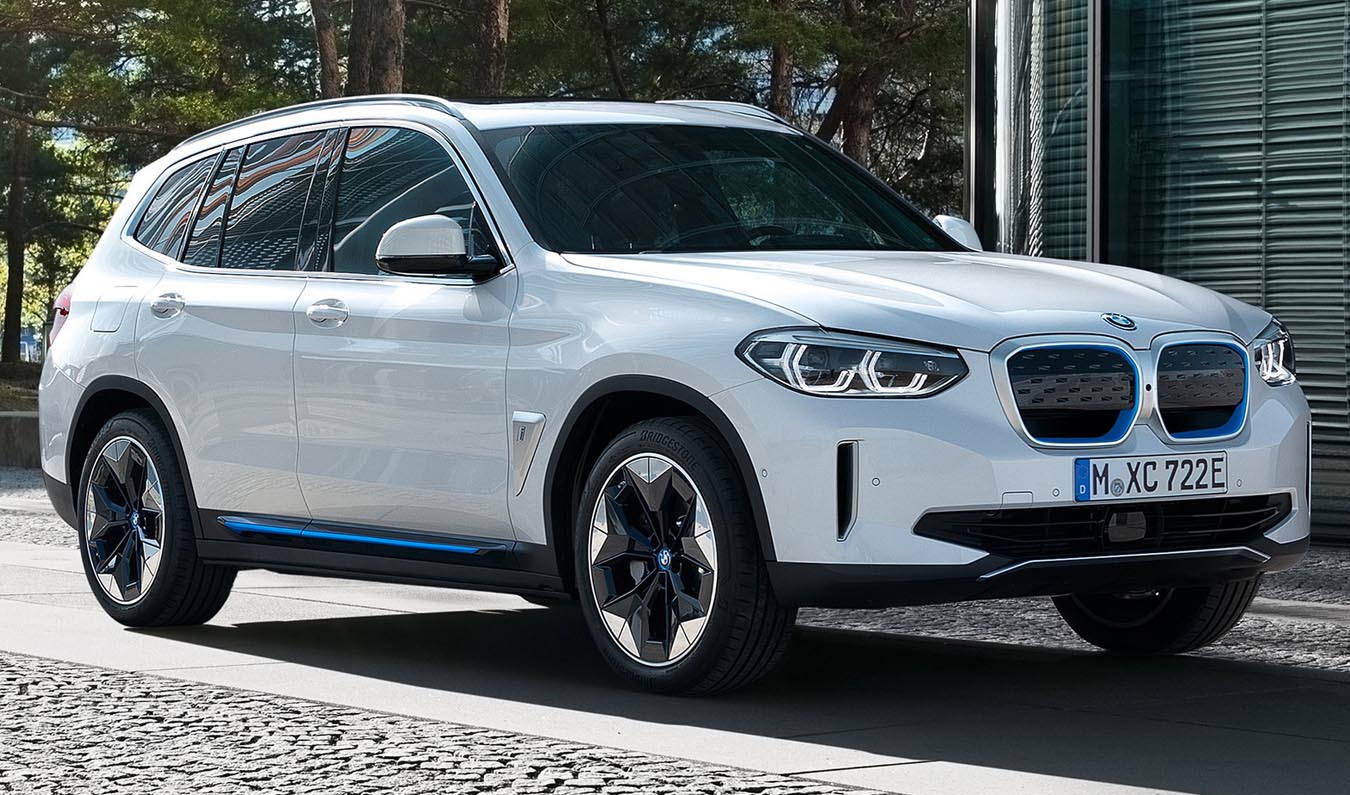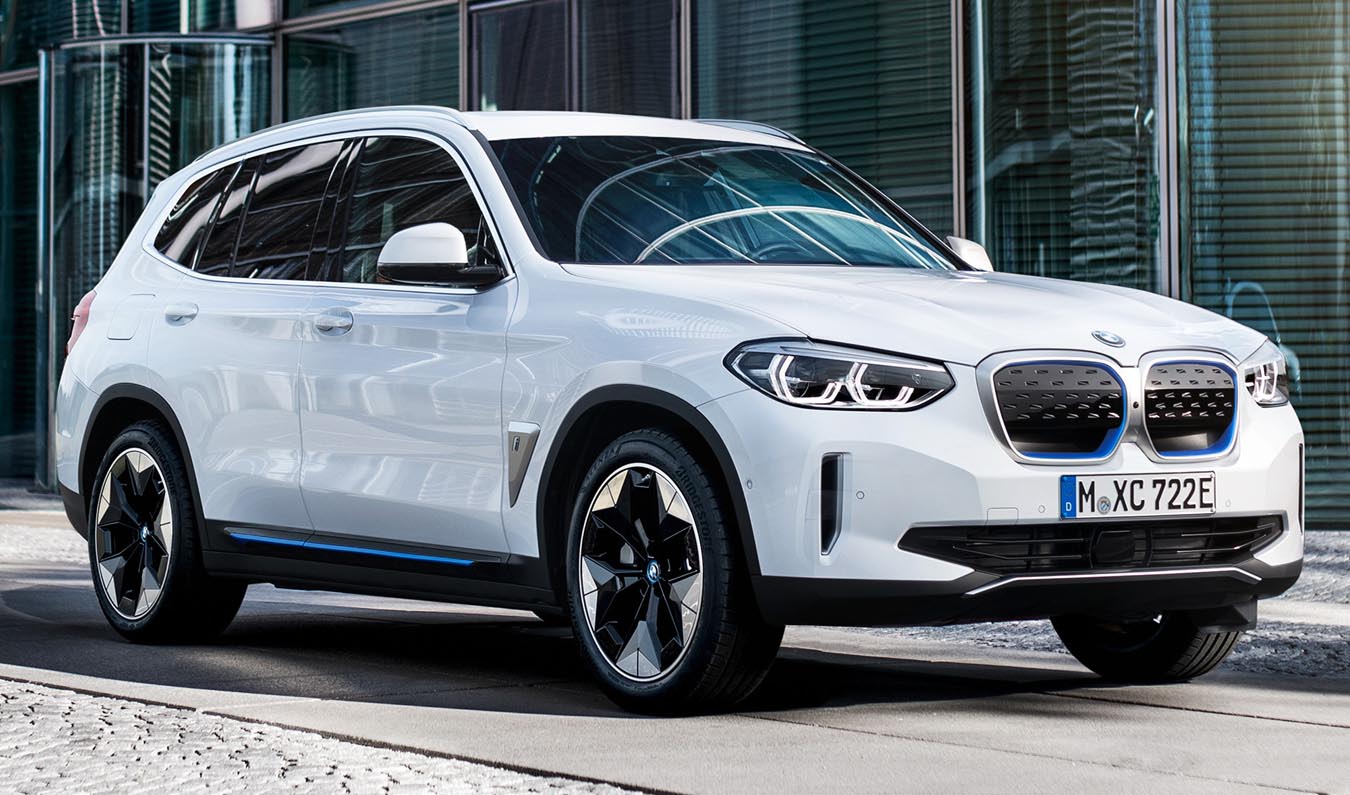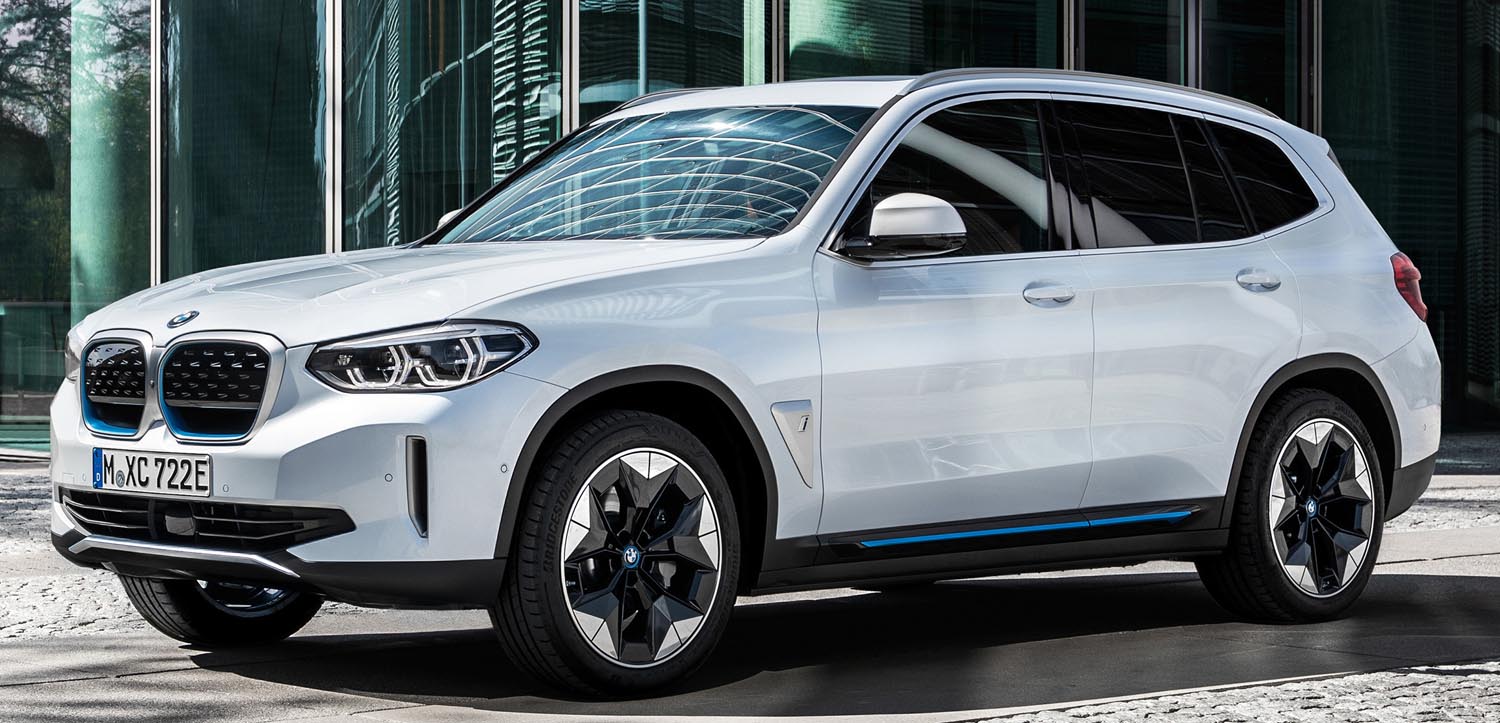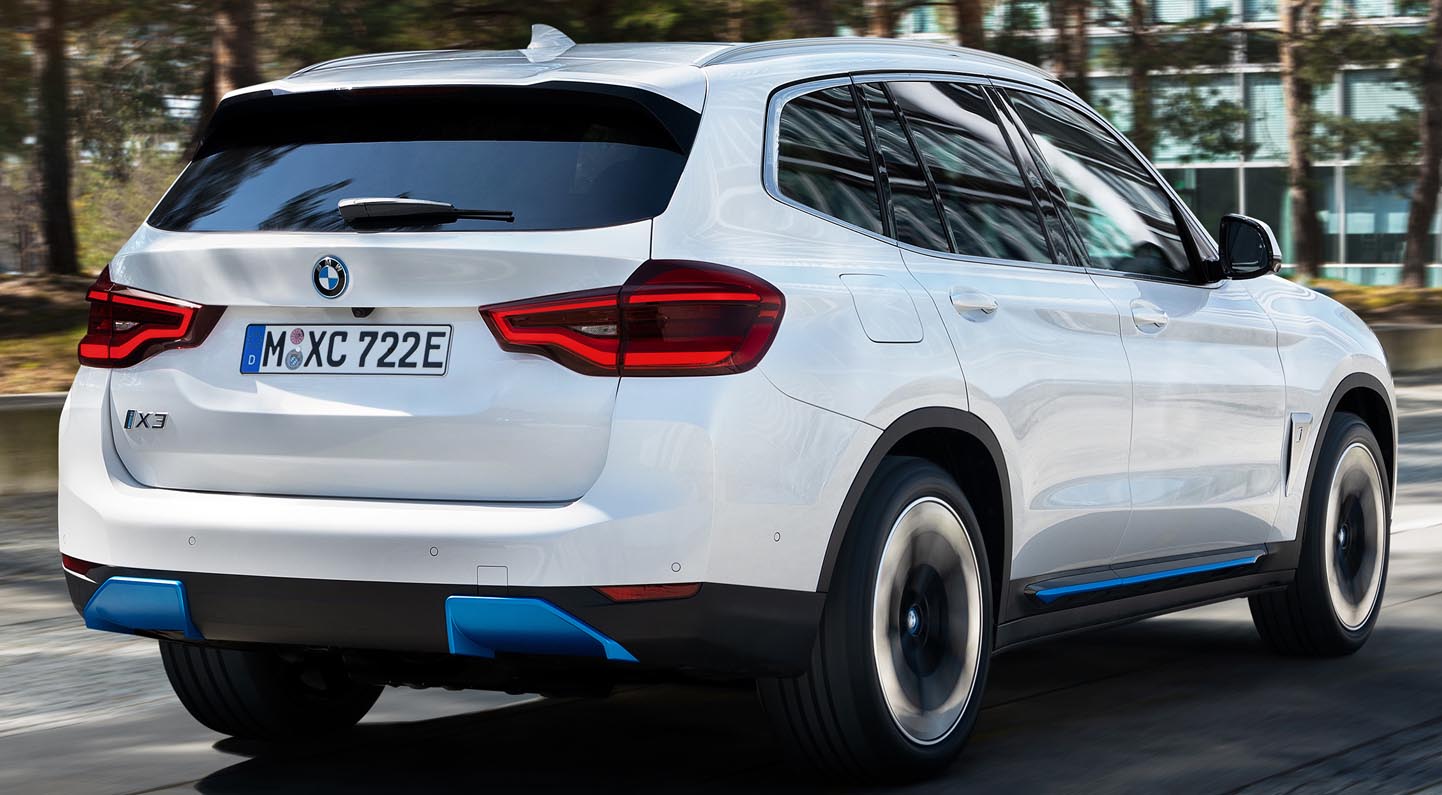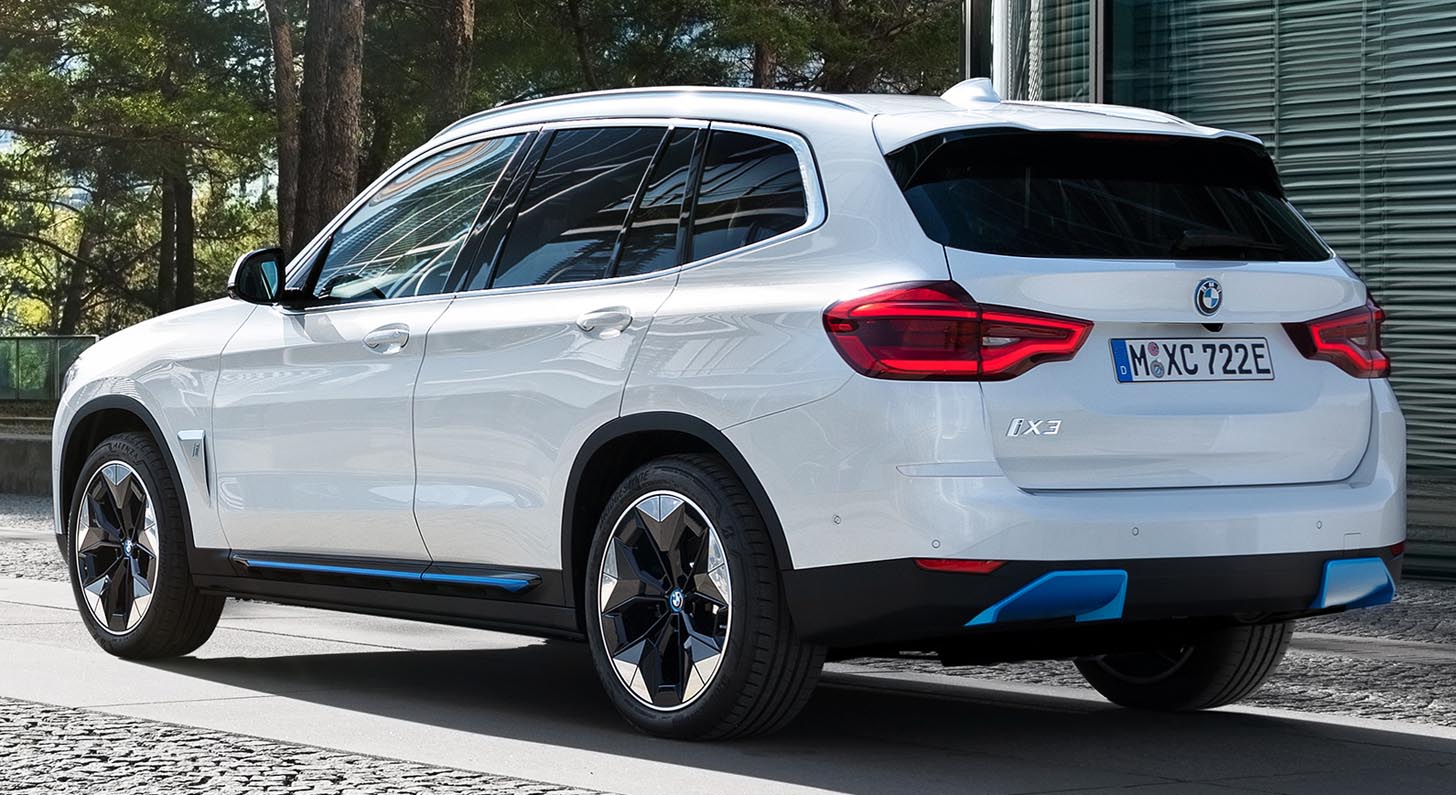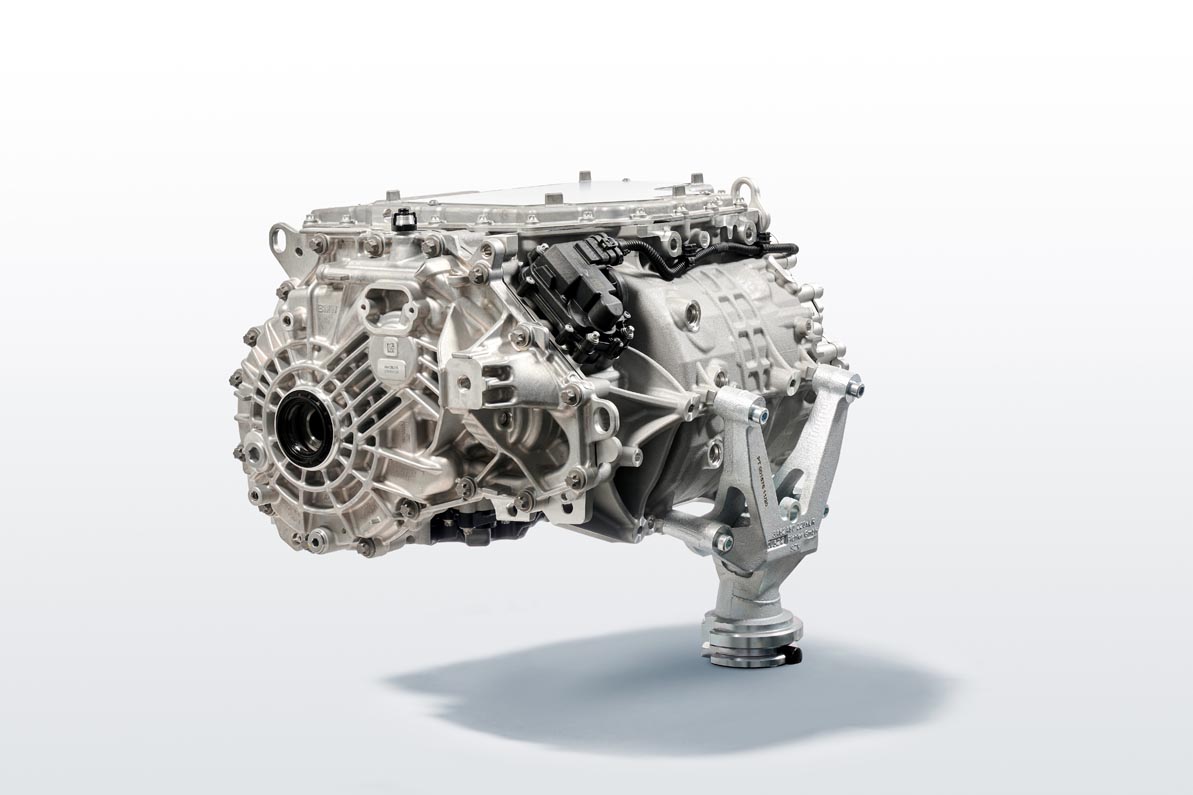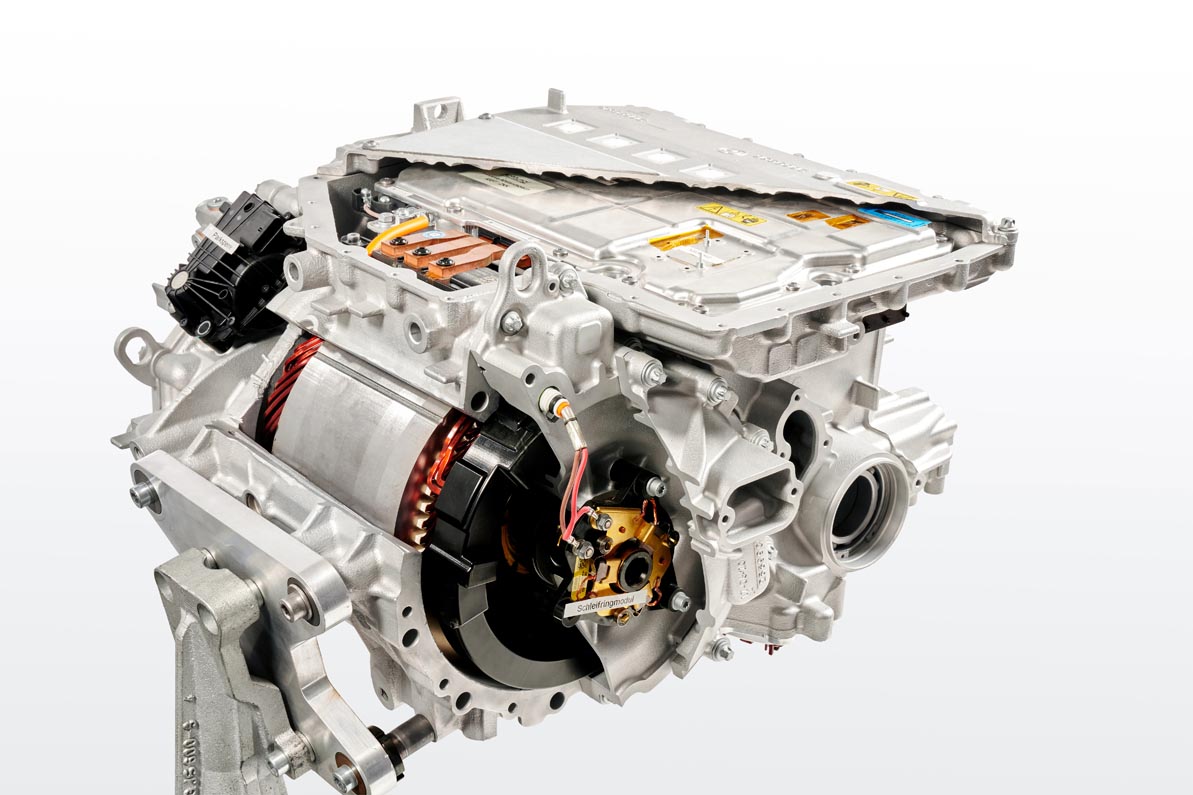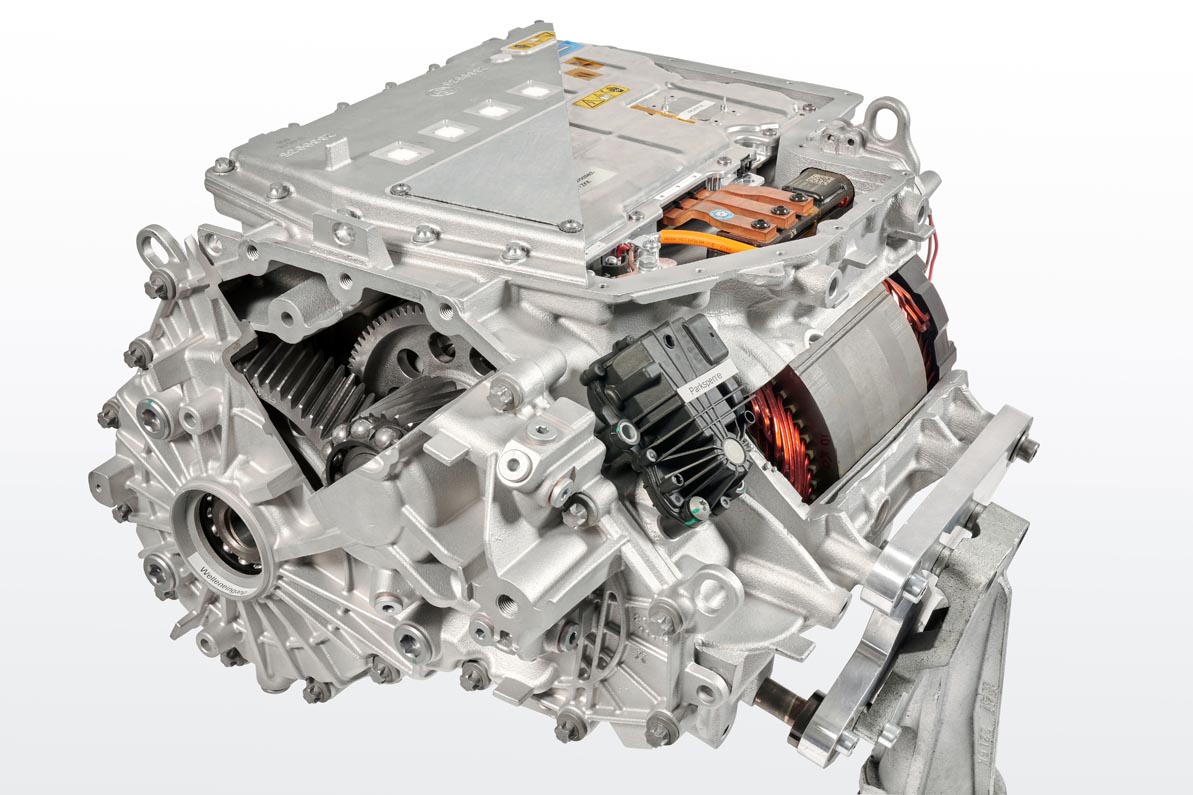
Full electric mobility makes its debut in the BMW brand’s product line-up as a Sports Activity Vehicle ushers in a new form of locally emission-free driving pleasure. The new BMW iX3 is the first vehicle in the core brand’s model range to be driven purely on electric power. The arrival of the new BMW iX3 represents the latest stage in the rollout of the BMW Group’s electrification strategy. This is the first time a pure-electric drive system has been combined with the rugged characteristics, multi-faceted functionality and spaciousness, comfort and hallmark sporting ability of a BMW X model.
The premiere of the new BMW iX3 also fires the starting gun for the fifth generation of BMW eDrive technology and kicks off a new era of electrified drive systems for premium cars. Significant progress has been made in terms of performance characteristics, operating range, weight, the installation space required and flexibility. The latest innovations developed by the BMW Group to optimise the electric motor, power electronics, charging technology and high-voltage battery give the new BMW iX3 a maximum output of 210 kW/286 hp, a range of up to 460 kilometres (285 miles) in the WLTP test cycle – equivalent to up to 520 kilometres (323 miles) in the NEDC test cycle – and a level of energy efficiency beyond that of any other model in its class. These innovations will also be feature in the upcoming fully electric BMW i4 and BMW iNEXT models.
Bespoke products and services from BMW Charging and innovative digital services from BMW Connected Charging give customers a broad variety of choices when it comes to simple, fast and convenient charging of the high-voltage battery at home, at the workplace or mid-journey. This wide-ranging offer reflects the BMW Group’s all-encompassing approach on electric mobility, which continues beyond the vehicle itself. It covers a variety of customer requirements and circumstances and helps new BMW iX3 owners to make optimum use of their car’s capabilities both in everyday driving and over longer distances.
Paired with its ongoing product offensive with plug-in hybrid models, the market launch of an all-electric Sports Activity Vehicle underscores the leading roleof the BMW Group in the transformation towards more sustainable mobility. The BMW Group currently offers a broader spread of vehicles with electrified drive systems than any rival. Now 13.4 per cent of all BMW Group vehicles newly registered across Europe are now models with all-electric or plug-in hybrid drive systems. Therefore, sustainable drive technology enjoys significantly greater prominence within the company than in the European car market as a whole, where electrically powered models currently account for 7.7 per cent of new registrations.
Contributing to this, the company is planning to expand its line-up to 25 electrified models by 2023, with more than half of those models being all-electric. Drive system electrification is one of the future fields of mobility set out by the BMW Group in its NUMBER ONE > NEXT corporate strategy. D-ACES (Design, Autonomous, Connected, Electrified and Services/Shared) innovations will put the building blocks in place for sustainable growth across the world’s car markets.
The market launch of the new BMW iX3 will begin in late 2020, when sales get underway in China. The electrically powered Sports Activity Vehicle will be produced at the Shenyang plant in China, which is operated by the joint venture BMW Brilliance Automotive. BMW eDrive components are also manufactured in Shenyang. The new BMW iX3 is therefore the brand’s first electric model to be built for export in China.
Power of Choice: BMW X3 model range with flexible drive system technology and wide-reaching charging strategy answers mobility needs worldwide
The new BMW iX3 is a fully-fledged Sports Activity Vehicle whose myriad qualities are rooted in the conceptual blueprint of the globally successful, conventionally powered BMW X3. The SAV for the premium midsize segment is one of the BMW brand’s first models whose architecture offers a new level of flexibility within the drive system technology developed for it. Thanks to this future-focused approach, the BMW X3 will be the brand’s first model to be available with highly efficient petrol and diesel engines, a locally emission-free plug-in hybrid system or a pure-electric drive.
The flexibility built into the BMW X3 embodies the strategic Power of Choice approach the BMW Group has implemented to meet the specific mobility needs of customers around the world. To this end, a wide spectrum of drive system technologies has spawned a selection of precisely targeted models adapted to meet a vast array of legal parameters and individual requirements.
The BMW iX3 has a unique rear axle subframe and bespoke chassis integration to help it meet the particular demands on a pure-electric vehicle concept. As well as the instantaneous power delivery of its electric motor and model-specific suspension tuning, it offers the combination of sporty, agile handling, excellent direction stability and supreme traction in adverse weather conditions and on loose ground, fulfilling customers expectations of a Sports Activity Vehicle.
With these qualities in place, the new BMW iX3 has an eye on both the current requirements of the electric vehicle segment and its future face. In its fifth generation, the BMW eDrive technology has reached a level of development beyond the one of market rivals and it provides an outstanding basis for economically sustainable applications in volume production models. At the same time, the strong appeal of its vehicle concept goes hand in hand with the rising demand worldwide for all-electric premium cars. The arrival of a highly efficient electric model in the globally popular premium midsize Sports Activity Vehicle segment contributes hugely to the reduction in CO2 emissions from road traffic. The new BMW iX3 is therefore the right electric vehicle at the right time.
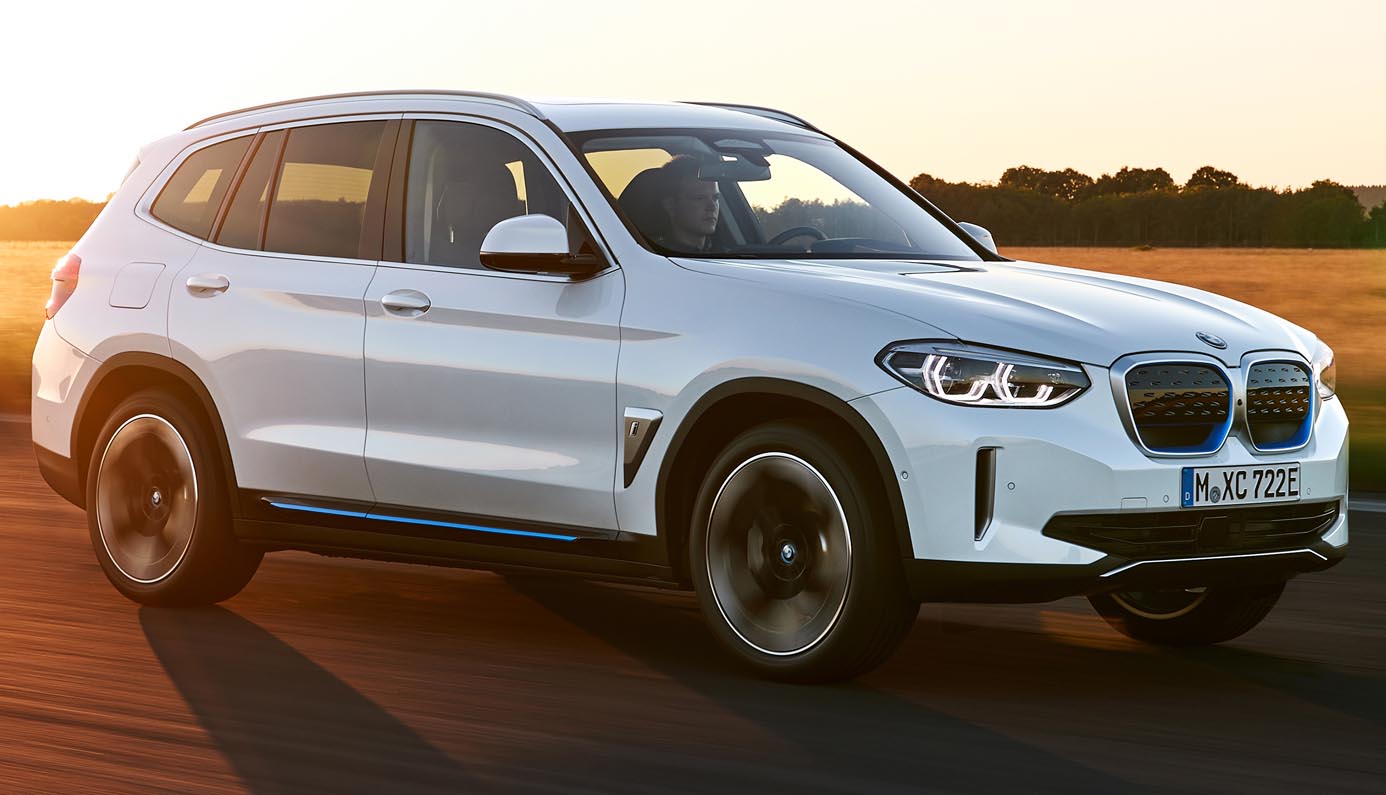
Sports Activity Vehicle blazes a trail for sustainable mobility
And so a BMW X model once again acts as a pioneer for a new and ground-breaking take on the brand’s hallmark driving pleasure. In 2015 the predecessor of the current BMW X5 xDrive45e became the first plug-in hybrid to be offered by the core BMW brand, joining the BMW i8 as the second PHEV in the BMW Group range. Following in the tyre tracks of the BMW i3 and MINI Cooper SE, the BMW iX3 is now the first pure-electric X model in the BMW Group portfolio. By 2023 the plan is for the number of electrified models in the line-up to have reached 25, of which 13 will run on electric power alone.
The development of the BMW iX3 was based on the experience amassed by the BMW i brand since 2011 and the BMW Group’s well-grounded expertise in the field of electric mobility. The history of electric mobility at BMW can be traced back to 1972, when electrically powered variants of the BMW 02 saw action as support vehicles for marathon races at the Olympic Games in Munich. The years that followed yielded a number of prototypes with electric drive systems, which helped the engineers to build up a substantial knowledge base on e-mobility and the technology required to make it work. The launch of Project i in 2007 lit the fuse for the development of a series-produced model conceived from the ground up to provide electric mobility in urban areas. The BMW i3 went on sale in 2013, followed by the BMW i8 – still the world’s most successful plug-in hybrid sports car – in 2014.
Since then, the BMW i brand has acted as a breeding ground for the electrified drive systems now found in BMW and MINI brand models, as electrified vehicles roll off the assembly lines at ten BMW Group production facilities around the world. Their BMW eDrive components are produced at the factories in Dingolfing (Germany), Shenyang (China) and Spartanburg (USA).
The drive components based on BMW eDrive technology are in-house developments by the BMW Group. The electric motor, the power electronics and high-voltage battery are built in the company’s own production facilities. This ensures the BMW Group has a direct hand in determining the product attributes and quality of the individual components. For example, producing prototype battery cells helps the BMW Group develop a deep understanding of the chemical properties of high-voltage battery systems and enables it to prepare the relevant suppliers to manufacture the cells according to its specific requirements.
The BMW Group has therefore carried over its development and manufacturing expertise with drive system technology to BMW eDrive components, leading to the creation of standalone solutions and outstanding concepts for electric vehicles. The new BMW iX3 owes its forward-looking character to the unique combination of its electric drive system’s efficiency, the optimised energy density of its high-voltage battery and its high charging power. This is the result of the BMW Group’s many years of unwavering development work in the field of electric mobility. The advances achieved since the market launch of the BMW i3 – combined with a helping hand from fifth-generation BMW eDrive technology – enable improvements in operating range through intelligently enhanced efficiency. This means that disproportionately large batteries, which would have a negative effect on vehicle weight, driving dynamics and electric power consumption, can be avoided. This typical BMW concept not only reduces energy costs but also optimises the car’s sporty driving characteristics and enables long-distance journeys to be completed at high average speeds.
Positive environmental rating over the entire vehicle lifecycle
At the BMW Group, every electrified model has to demonstrate a clearly superior CO2 environmental performance – from procurement of raw materials to the supply chain, production, use phase and recycling – over a comparable conventionally powered vehicle. The BMW iX3 outperforms the diesel-powered BMW X3 xDrive 20d by more than 30 per cent when charging with average European electricity in the use phase and roughly 60 per cent when exclusively green energy is used.
The extensive use of secondary raw materials in the manufacture of aluminium castings and thermoplastics, the absence of rare earths thanks to an innovative design for the electric motor and the across-the-board use of renewable energy in the production of the new BMW iX3, including the cell manufacturing for the high-voltage battery, have also had a positive effect on the car’s environmental footprint. The analysis and conclusions of the environmental assessment for the iX3 – spanning the full value chain and the vehicle’s entire lifecycle – will be verified and certified by an independent testing institute by the time production begins.
The first all-electric Sports Activity Vehicle therefore sets new standards in its class when it comes to efficiency and range, the sparing use of raw materials and the lowering of CO2 emissions throughout the product lifecycle.
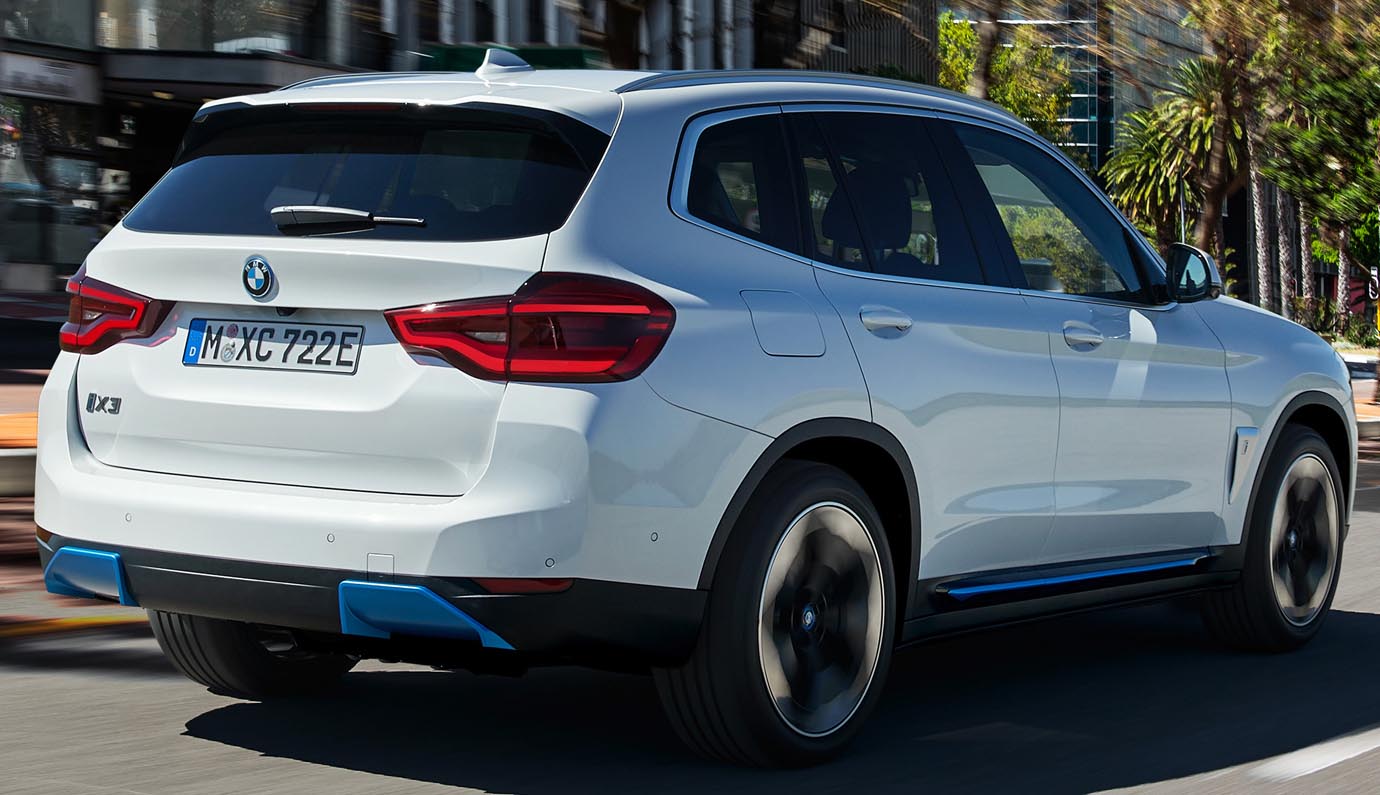
The drive system
The new BMW iX3 blazes a trail for the latest development stage in electrified drive systems. The fifth generation of BMW eDrive technology stands out with its all-new, highly integrated design principle for the drive components. The electric motor, power electronics and transmission are now arranged together in a single housing. The highly integrated electric drive system topology allows a substantial reduction in the installation space required and the weight of the components relative to the power they produce. This has brought about an increase in power density of around 30 per cent compared with the BMW eDrive technology featured in existing electrified models.
The fifth-generation electric drive system will also be fitted in the BMW i4 and BMW iNEXT models from 2021. It is highly scalable and can be adapted to varying vehicle concepts, installation space and power requirements.
The electric motor developed for the new BMW iX3 produces a maximum output of 210 kW/286 hp and develops peak torque of 400 Nm (295 lb-ft) from rest. The new BMW iX3 therefore has by far the most powerful e-drive system ever fitted in an electrified model from the BMW brand. It also helps to generate the driving pleasure for which BMW is renowned, courtesy of its signature performance characteristics and consummate silence. The latest version of the electric motor developed in-house by the BMW Group displays exceptional efficiency of up to 93 per cent.
Another element of the fifth-generation BMW eDrive technology is the high-voltage battery with further developed cell technology. Committed research and development work has allowed the BMW Group to elevate the performance capability and energy density of the battery once again. The gravimetric energy density of the energy storage system has been increased by another 20 per cent over the battery cells used in BMW’s electrically powered models up to now. The high-voltage battery in the new BMW iX3 sets the current benchmark in storage technology for electric energy as far as all the relevant properties – including durability and safety – are concerned. Positioned flat in the vehicle floor of the new BMW iX3, the battery has a gross energy content of 80 kWh. Together with the high efficiency of the electric motor, the new generation of battery cell technology enables an exceptionally high operating range given the size and weight of the high-voltage battery. The new BMW iX3 posts a range of up to460 kilometres (285 miles) in the WLTP test cycle. This equates to a range of up to520 kilometres (323 miles) when translated back into values for the old NEDC test cycle.
The resultant capability of the new BMW iX3 in everyday use and over long-distance journeys is rooted in an all-encompassing concept for increasing sustainability. It therefore differs significantly from other electric vehicles in its segment, as their range is boosted mostly by ever larger high-voltage batteries – which impacts negatively on the vehicle’s weight and, by extension, its overall efficiency. By contrast, the BMW iX3 stands out with its unique combination of a highly efficient drive system, adaptive recuperation while on the move, low-loss charges at up to 150 kW and extensive measures for reducing air resistance, including innovative aerodynamic wheels. This notably improves both the everyday usability of the all-electric SAV, and above all its long-distance driving ability.
The electric motor: current-excited synchronous motor with sporting performance characteristics and standout efficiency
The BMW Group’s traditional expertise in the development of drive system technology also comes into play with electric mobility. The latest advances in this area give the electric motor making its debut in the new BMW iX3 its specific qualities. A new construction method and a host of innovative detail solutions imbue the motor with mesmerising performance and outstanding efficiency.
The electric motor in the new BMW iX3 works according to the principle of a current-excited synchronous motor and therefore differs significantly from other solutions on the market. The excitation of the rotor is not induced by fixed permanent magnets, but the feed-in of electric power. This design allows the rare earths required for magnetic components to be entirely avoided in the manufacture of the electric motor. Meaning, the BMW Group is not dependent on their availability.
In addition, further progress made in the development of motor technology leads to a significant leap forward in power delivery and efficiency. The drive system can now rev to 17,000 rpm. Maximum output of 210 kW/286 hp is available early on and remains on tap over a wide band up to the rpm red line or the car’s top speed. The motor in the new BMW iX3 generates peak torque of 400 Nm (295 lb-ft) – an extraordinarily high figure for a car of its size – and the driver can access all of this from rest, thanks to judiciously managed excitation of the rotors. Unlike other electric motors, this one also maintains its maximum torque level over a broad rev band. All of which means the driving experience is defined by the car’s ability to not only serve up its power instantaneously but also sustains this power at an extremely constant level, accentuating the car’s sporting character. The new BMW iX3 sprints from 0 to 100 km/h (62 mph) in 6.8 seconds, putting it in the same territory as the conventionally powered BMW X3 xDrive30i. Top speed is electronically limited to 180 km/h (112 mph).
The current-excited synchronous motor design principle also offers unparalleled freedom when it comes to adjusting the amount of excitation, which is induced via electrically generated impulses. Drivers will therefore notice clear differences in the performance profiles of the different driving modes. The highest degree of excitation can be summoned by setting the Driving Experience Control switch to SPORT mode. Here, the motor’s lightning-fast power delivery encourages a sporty driving style with the rapid acceleration it provides. Reduced excitation increases the efficiency of the drive system in COMFORT and ECO PRO modes. Drivers can also choose to have no excitation of the motor at all, in which case the car will also glide along particularly efficiently in coasting mode. There will be no recuperation on the overrun.
The motor’s drive power is transferred along the shortest possible path to the single-ratio transmission, which is installed in the same housing and has likewise been developed and produced by the BMW Group. In the new BMW iX3, the overall electric drive unit – which brings together the electric motor, power electronics and transmission in one place – occupies the space available in the model-specific rear axle subframe. From there, power is sent directly to the rear wheels of the new BMW iX3. This further increases the overall efficiency of the drive system, the reduction in electric power consumption extends the range of the new BMW iX3, and drivers enjoy a classic BMW rear-drive experience. It also offers exceptional performance on snow, ice and loose terrain thanks to standout traction and excellent directional stability. Its advanced driving stability control technology with ARB (near-actuator wheel slip limitation) allows it to sustain relentless forward momentum even in adverse road and weather conditions.
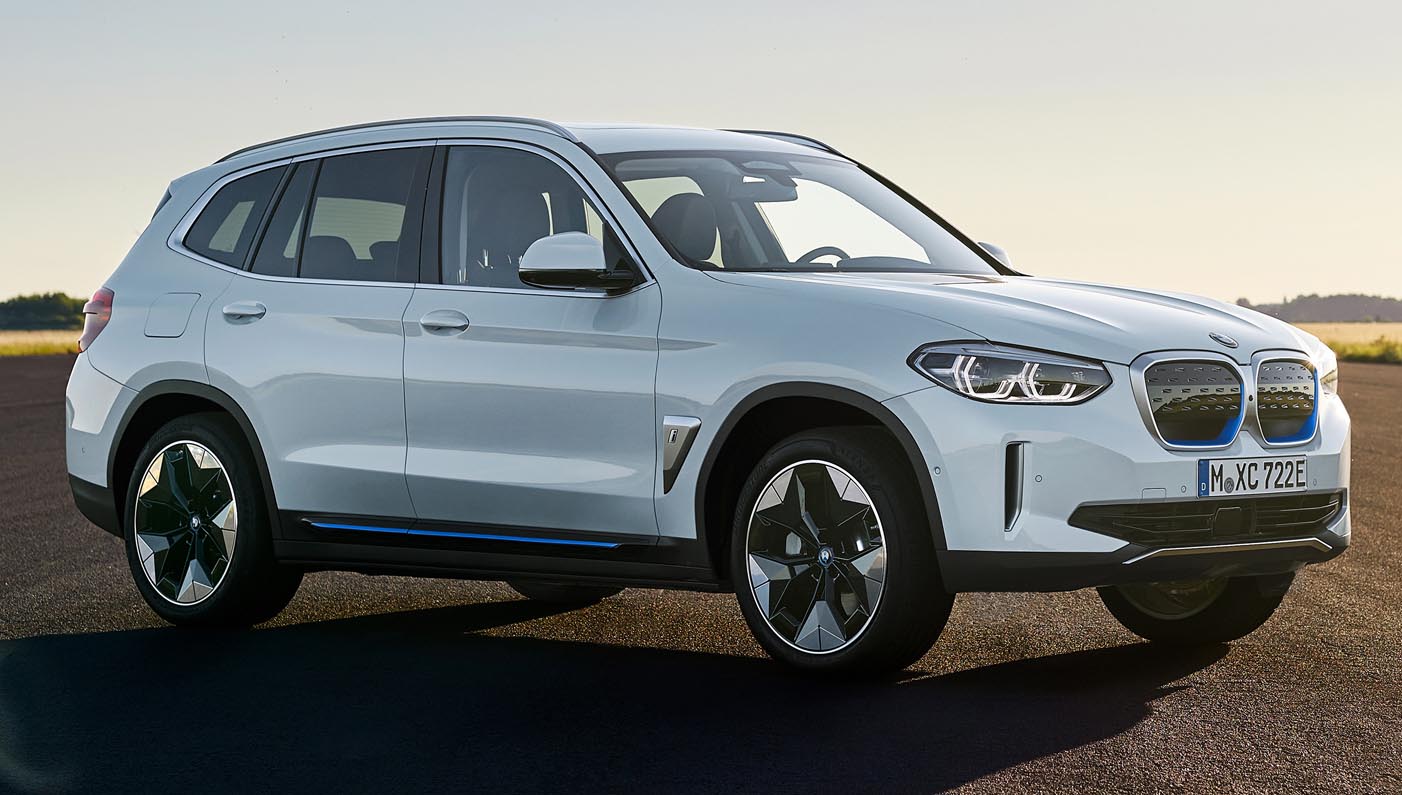
Adaptive recuperation: Intelligent connectivity enhances efficiency and driving comfort
Adaptive recuperation enhances the efficiency of the new BMW iX3 while on the move. This innovative function uses intelligent connectivity to optimise both the car’s range and its driving comfort. The intensity of the Brake Energy Regeneration is adapted to the road situation detected by data from the navigation system and the driver assistance system sensors. For example, when approaching a junction, a speed-restricted stretch of road or a vehicle on the road ahead, recuperation is fully utilized, strengthening the deceleration effect and increases the amount of energy fed back into the high-voltage battery. These adjustments to the driving situation are also carried out when the navigation system’s route guidance function is not activated.
On the open road, the coasting function is activated to enhance efficiency and comfort whenever the driver takes their foot off the accelerator. Also, precise control of the adaptive recuperation enables instantaneous responses to changes in the driving situation. For example, activating the turn signal indicator while coasting immediately initiates recuperation. However, when approaching junctions with traffic lights, Brake Energy Regeneration is cancelled if the lights turn from red to green.
Adaptive recuperation is one of the standard settings activated when the driving position D is engaged using the selector lever on the centre console. Alternatively, the driver can choose a high, medium or low Brake Energy Regeneration setting in the iDrive menu to apply across all driving situations. In driving position D, the new BMW iX3 pulls away at minimal speed as soon as the brake pedal is released, increasing comfort when manoeuvring and in stop-start traffic. Activating driving position B with the selector lever generates the one-pedal feeling characteristic of the BMW Group’s electric vehicles by providing particularly strong recuperation.
The high-voltage battery: high energy density, controlled use of raw materials
The high-voltage battery in the new BMW iX3 is based on the latest NMC-811 technology with the prismatic design familiar from other BMW applications. Its specific properties are the result of the BMW Group’s rigorous research and development work. The company has been producing modules and batteries for vehicles with electrified drive systems since 2013 and possesses an extraordinarily high level of expertise when it comes to both battery cell technology and the manufacture of model-specific high-voltage batteries. An independently developed modular system with flexible arrangement of the modules allows batteries developed in-house to be integrated into a variety of different vehicle concepts. Underlying work carried out in the fields of cell chemistry and cell design has also put the company in the position to give clear specifications – geared to the particular requirements of use in electrified vehicles – to external battery cell producers.
The high-voltage battery developed for the new BMW iX3 is likewise part of the fifth-generation BMW eDrive technology. Added to which, the latest version of the lithium-ion battery is another example of the BMW Group’s all-encompassing sustainability strategy at work. The amount of raw material cobalt used in the manufacturing of the new high-voltage battery has been reduced by around a third compared with the previous-generation battery. The BMW Group has put in place its own procurement process for the cobalt and lithium it supplies to the producers of the battery cells, part of which involves monitoring compliance with environmental and social standards.
The latest advances in the field of battery technology concern both the performance capacity and energy density of the cells and the structure of the modules and their arrangement in the storage unit. This storage unit has been developed specially for the BMW iX3 and model-specific versions will also feature in electric BMWs to come. For example, the high-voltage battery in the new BMW iX3 has a higher number of cells per module, a reduced component count and a more compact, extremely slim construction.
The high-voltage battery in the new BMW iX3 is composed of 188 individually controllable, prismatic battery cells – each cased in aluminium – which are grouped into 10 modules. The battery is positioned low down in the vehicle floor as an integral component of the body. The new-generation battery weighs 518 kilograms and has a gross energy content of 80 kWh, of which 74 kWh is utilised, giving it an incredibly favourable mass to storage capacity ratio for this class.
A sophisticated cooling and heating system ensures the high-voltage battery is kept at an optimum temperature at all times. Tailored particularly to fifth-generation BMW eDrive technology, its design principle also represents a significant step forward compared to the systems used up to now in the BMW Group’s electrified vehicles. The liquid cooling/heating system serves the storage unit, power electronics and electric motor. A cooling module with two levels and a powerful control unit ensures ideal temperature control for the BMW eDrive components in all operating conditions and virtually any weather. A separate, electrically operated auxiliary heater ensures that the high-voltage battery achieves a consistently high level of effectiveness when starting the car – even in extremely low outside temperatures down to minus 30 degrees Celsius. The interior and battery are heated using a heat pump system. The pump is distinguished by extremely high efficiency; it uses between 40 and 80 per cent less energy than conventional electric heating (depending on the outside temperature), while providing an equally comfortable on-board climate. It extracts excess heat from the motor, drive system control unit and high-voltage battery, as well as the outside air, and feeds it through the air conditioning system. The integrated management system for the climate and heating system also ensures need-based heating of the interior and optimal cooling of the high-voltage battery.
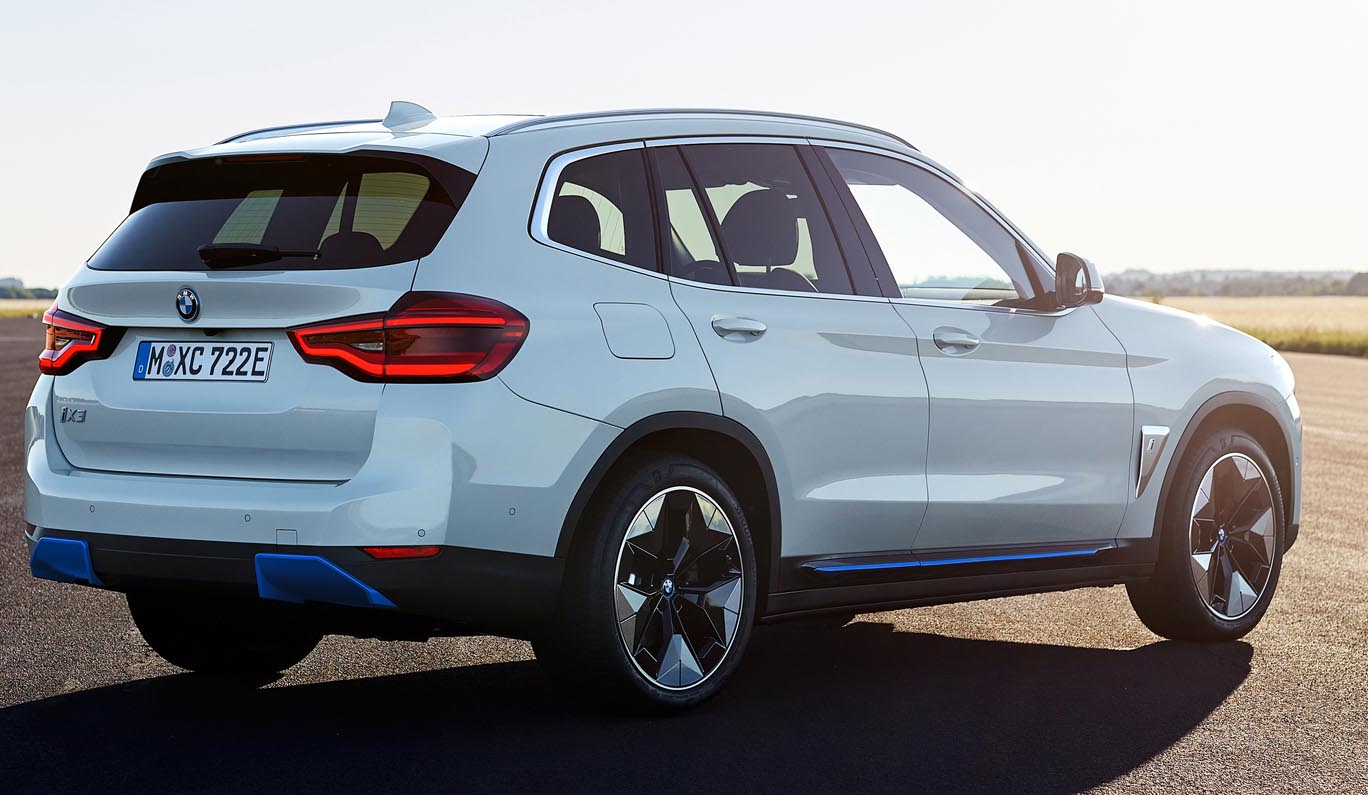
Combined Charging Unit and fast charging at up to 150 kW
The new technological features making their debuts as part of the fifth-generation BMW eDrive technology include an innovative charging unit. The Combined Charging Unit (CCU) used in the new BMW iX3 enables an extremely high degree of flexibility when it comes to plugging the car into charging stations of various types, which means it can feed electric energy into vehicles easily and quickly in countries around the world. When using alternating current (AC) terminals, the CCU enables single-phase charging at up to 7.4 kW and three-phase charging at up to 11 kW. Plugging the vehicle into a direct current (DC) fast-charging station opens the door to much higher charging outputs. And at high-power charging stations – which provide ultra-rapid charging on key transit routes – electrified models from the BMW Group can now benefit from charging outputs of up to 150 kW.
The CCU with an integral 4 kW voltage transformer connected to the 12V on-board power supply – from the lighting, driver assistance systems and audio system to the seat heating – also supplies consumers with electric energy from the car’s high-voltage battery.
The high-voltage battery of the new BMW iX3 can be charged from conventional domestic or industrial sockets, from a Wallbox or at public charging stations. With the car plugged into a Wallbox, the high-voltage battery can be charged from 0 to 100 per cent at up to 11 kW in 7.5 hours. Meanwhile, a direct current (DC) fast-charging station can replenish the battery from 0 to 80 per cent of its full capacity in 34 minutes. A 10-minute charge at one these stations provides enough power to add 100 kilometres (62 miles) to the driving range in the WLTP cycle.
The new BMW iX3 has a combined CCS AC/DC charging socket positioned above the right-hand rear wheel arch.
The design
The exterior design of the new BMW iX3 displays the typical proportions of a Sports Activity Vehicle, which means it provides a visual showcase for the robust premium character and all-round talents espoused by BMW X models. But it also adds a locally emission-free drive system to the mix – without diluting those core SAV attributes in any way. The distinctive identity of the new iX3, encapsulated by its all-electric drive system, is highlighted by model-specific design features. Bespoke modifications for the front/rear apron, the largely enclosed kidney grille and newly developed light-alloy wheels optimise the car’s aerodynamics. Plus, judiciously sited blue accents reference its technological connection with the BMW i brand.
Lines and surfacing guided by the new BMW design language imbue the BMW iX3 with the cutting-edge allure of a Sports Activity Vehicle. Powerful proportions, a long wheelbase, short overhangs and slightly hexagonal wheel arches point to the signature sporting versatility of BMW X models. The sophisticated sense of presence and sporting elegance in the car’s exterior design are emphasised by precise lines and clearly structured surfaces. Moving inside, the raised seating position helps giving the driver a commanding view over the road. Besides that, generous levels of space in all five seats, a premium ambience and a high degree of variability also bring hallmark BMW driving pleasure, a powerful sensation of exclusivity and a high level of everyday practicality to the all-electric variant of the Sports Activity Vehicle.
Optimised aerodynamics create a distinctive presence
The model-specific design of the front end is a case study in functional efficiency. The most eye-catching feature here is the largely enclosed design of the BMW kidney grille and front apron. Chrome surrounds frame the two grille elements, whose inner surfaces have a mesh-like structure of the sort only previously seen in the kidney grilles of elite sporting machines from BMW M. On the BMW iX3, the mesh design is complemented by a familiar BMW i blue accent along the inner edges of the kidney surrounds.
The closed surfaces within the kidney grille reduce air resistance and reflect the lower cooling air requirement of the car’s electric drive system. However, the drive components and brakes of an electrically powered vehicle still require precise temperature control, so the lower air intake and the aperture in the kidney grille (not visible from the outside) both benefit from ten-stage active air flap control. This allows cooling air to flow through to the relevant components in the quantities required.
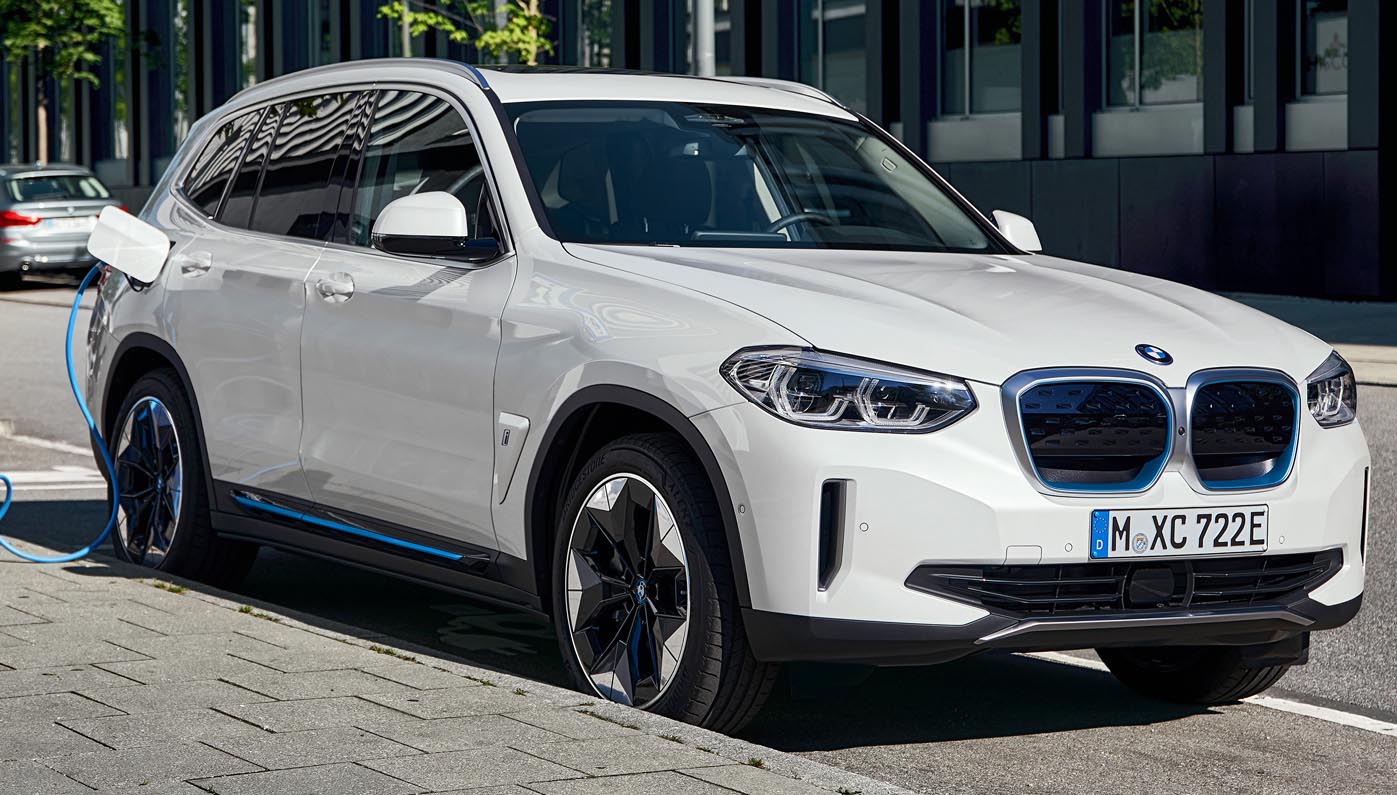
Innovative aerodynamic wheels increase range
Air Curtains in the outer areas of the front apron guide the air deliberately along the front wheels to minimise turbulence. Teaming the Air Curtains with innovative, aerodynamically optimised light-alloy wheels proves highly effective in smoothing those air flows around the wheel arches that most influence the vehicle’s overall drag. The aerodynamic wheels fitted to the new BMW iX3 reduce its drag coefficient by around 5 per cent compared to an equivalent vehicle with conventional light-alloy wheels. The consequent improvement in efficiency adds around 10 kilometres (6 miles) to the range of the new BMW iX3 in the WLTP test cycle.
The innovative new aerodynamic wheels blend their reduced air resistance with the sporting elegance of a V-spoke aluminium wheel. The dimensions of the base wheel ensure it meets all the structural challenges involved in transmitting dynamic driving forces to the road. Meanwhile, inserts with a high-class finish are responsible for achieving the necessary aerodynamic impact. This new design principle opens up additional scope for customising the wheels. Furthermore, they weigh around 15 per cent less than the previous BMW light-alloy items with aerodynamically optimised surfaces. The BMW iX3 is fitted with 19-inch aerodynamic wheels as standard and can also be ordered with optional 20-inch items.
The underbody of the new BMW iX3 is largely enclosed – with the help of precisely sculpted panelling and air deflectors – due to the positioning here of the high-voltage battery housing. Measures including airflow-optimised stiffening ribs, carefully channelled airflow around the front wheels and a rear axle cover enhance aerodynamics. A special cover for the rear struts optimises airflow to the rear diffuser. The all-electric – and therefore exhaust-system-free – drive concept enables a smooth and sealed surface design for the underbody and rear apron, which also has a positive effect on aerodynamics. Blue inlays in the rear diffuser draw attention to the vehicle’s highly sustainable character. Together, these optimisation measures give the new BMW iX3 a drag coefficient (Cd) of 0.29. The Air Breathers in the front side panels come in Pearl-effect Chrome and carry the BMW i logo. Blue inlays for the side skirts and the use of the signature BMW i colour for the outline of the brand logo on the bonnet, tailgate and wheel rims set the seal on the distinctive visual identity of the new BMW iX3.
Interior: premium ambience with model-specific accents
The interior of the car also contains blue accents as a reference to the pure-electric drive system below the surface. These can be found on both the Start/Stop button and the gear selector lever. Other model-specific cues include the model lettering on the centre console, door sill plates bearing the BMW i logo, the screens in the cockpit and Control Display adapted to the presence of an electric drive system as well as the standard-fitted ambient lighting, which provides blue illumination in its default setting.
Clearly structured controls with standard electroplated applications, stylishly designed surfaces and high-quality materials also generate an unmistakable premium ambience inside the all-electric variant of the BMW X3, together with the blend of elegance and sporting flair typical of the BMW brand. Individualisation options include a choice of five interior trim strips, three of which feature fine wood. The standard seats are offered in two trim colours, the optional sport seats in four shades.
The exterior of the new BMW iX3 can be ordered exclusively with metallic paint finishes. Customers can choose from Carbon Black metallic, Sophisto Grey brilliant effect metallic, Mineral White metallic, Phytonic Blue metallic, Piedmont Red metallic and Cashmere Silver metallic. The Phytonic Blue metallic and Piedmont Red metallic variants combined with accents in Frozen Grey or Pearl-effect Chrome instead of the hallmark BMW i blue detailing.
Equipment
The first purely electric BMW X model is a bona fide Sports Activity Vehicle fulfilling the driving pleasure for which BMW is renowned for, while also making its mark as a consummate all-rounder. The same chassis technology featured in the conventionally powered versions of the BMW X3 produces the familiar blend of excellent on-road agility, superb long-distance comfort and robust versatility when venturing into off-road terrain. The electric motor’s instantaneous power delivery and the bespoke tuning of the chassis technology help endow the new BMW iX3 with sporty, light-footed handling. It also boasts outstanding traction and directional stability, providing the unerring forward progress in all weather and road surface conditions that Sports Activity Vehicle customers expect.
The high-voltage battery fitted in the new BMW iX3 has an extremely slim design, allowing it to be incorporated into the SAV’s flexible vehicle architecture and positioned low down in the car’s underbody. This lowers the car’s centre of gravity by around 7,5 centimetres compared to its conventionally powered BMW X3 siblings, noticeably enhancing cornering dynamics.
The new BMW iX3 is equipped as standard with adaptive suspension featuring electronically controlled dampers. Adjusting damper response to the prevailing road surface conditions and driving situation enables carefully judged optimisation of the car’s ride comfort and sporty handling characteristics. Adaptive M suspension, which is tuned to deliver particularly sporty damper response, can be added at a later stage as an over-the-air update.
The interior of the new BMW iX3 has a highly versatile design. The driver, the front passenger and the three occupants in the rear enjoy almost exactly the same levels of space as in conventionally powered BMW X3 variants. And there are no major differences either in terms of luggage compartment flexibility. Primary load capacity matches that of combustion-engined BMW X3 models, while the boot floor lifts up to reveal a stowage compartment for the charging cable or luggage compartment cover. Thanks to the 40 : 20 : 40 split/folding rear seat backrest, load space can be expanded as required. The load capacity of the new BMW iX3 is between 510 and 1,560 litres. A trailer coupling can also be specified as an option for the new all-electric SAV, which has a maximum trailer load of 750 kilograms.
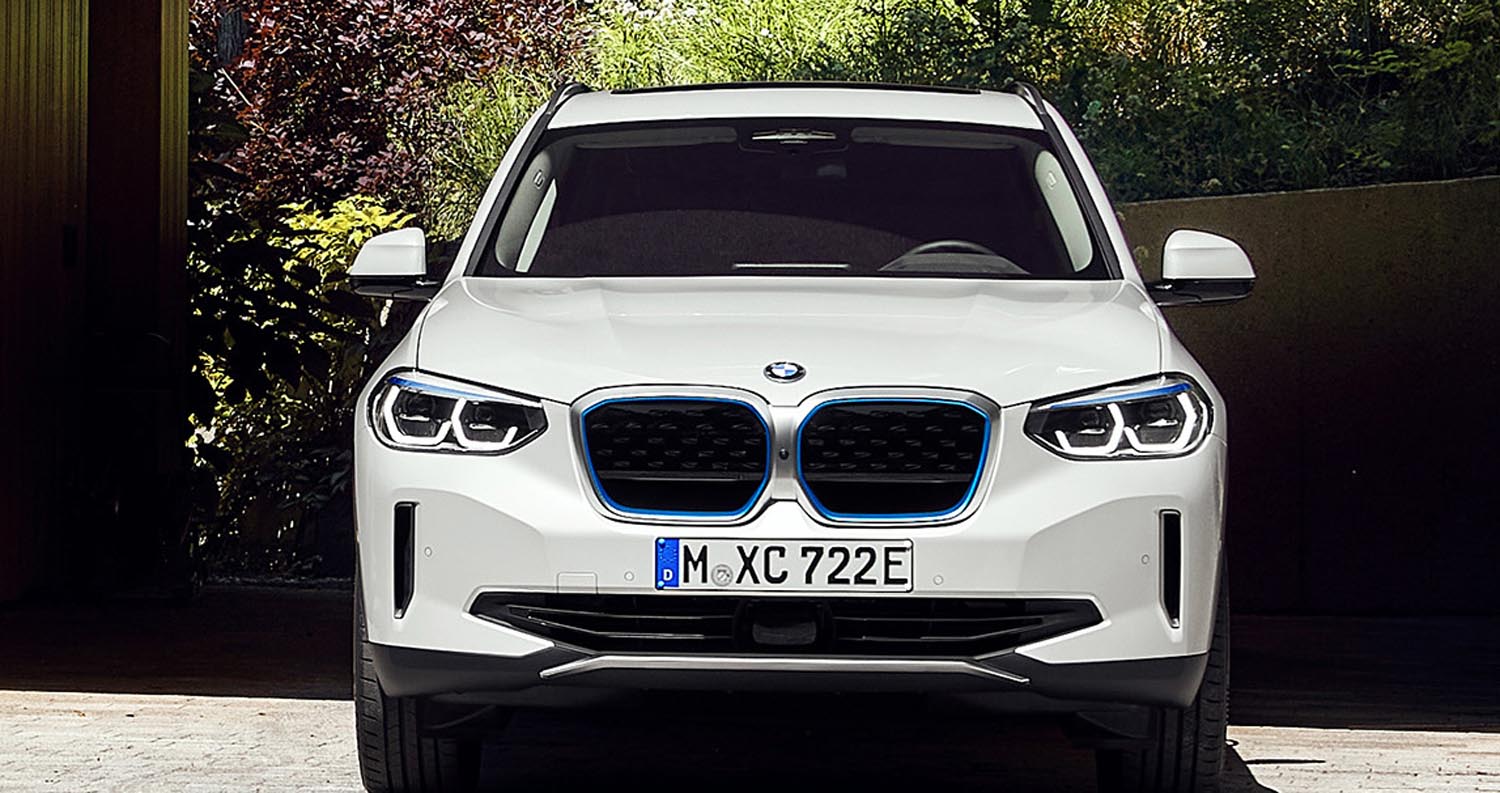
BMW IconicSounds Electric: a new soundscape for an emotionally rich driving experience
One feature unique to the new BMW iX3 is the simulated drive sound making its production debut under the BMW IconicSounds Electric banner. Emitted via speakers on the inside and outside of the car, and specially composed for BMW models with electrified drive systems, the soundtrack lends added emotional depth to the electric driving experience. The tone alters to reflect driving style, providing acoustic feedback that further reinforces the bond between driver and car. When the Start/Stop button is pressed, a short composition sets the scene for the electric driving experience in store. This particular feature comes as standard on the new BMW iX3, while the drive sound (“BMW Iconic Sounds Electric”) can be added by opting for the “Impressive” equipment line.
The drive sound is an original development of the BMW sound designers and acoustics engineers. The Start/Stop composition in the BMW iX3 is the first sound work for a production car to come out of the cooperation between Award-winning composer Hans Zimmer and BMW. Zimmer had already worked together with BMW Sound Designer Renzo Vitale on the distinctive driving tracks for the BMW Vision M NEXT and BMW Concept i4. Drive system sounds produced as part of the collaboration with Hans Zimmer will be available in electrified vehicles from BMW at a later stage.
The soundtrack forms part of the unique identity of the new BMW iX3 in the same way as the car’s design and driving qualities. Pressing the Start/Stop button triggers a brief composition confirming that the electric drive system is in ready-to-drive state. The sequence was created with Hans Zimmer as the overture to an all-new, emotion-packed driving experience. The complex sound composition increases the sense of excitement at the prospect of trailblazing mobility with zero local emissions. The driver also receives acoustic feedback when the accelerator is pressed; the car picks up speed to the backing of a powerful sound, which blends unobtrusively with the tyre noise at higher speeds. Like the car’s speed, the sound development is linear in nature. Load changes are signalled by a smoothly modulated sound, and recuperation during overrun and braking is accompanied by gently filtered acoustic feedback, meaning that every driving state is replicated by a suitable sound pattern.
The sound output through the exterior speakers is seamlessly harmonised with the mandatory acoustic pedestrian protection included as standard.
If the Driving Experience Control switch is set to SPORT mode, the sound both inside and outside the car acquires a particularly distinctive, low-frequency timbre, whereas higher frequencies shape the aural experience in COMFORT mode. Engaging ECO Pro mode deactivates the drive sound. Using the iDrive Controller, the driver can go into the vehicle settings and select their preferred sound variant as the default sound pattern or even completely deactivate the acoustic response to movements of the accelerator.
Two model variants offering attractive equipment configurations
The new BMW iX3 leaves the factory with an extremely generous standard specification. The standard equipment line “Inspiring” comprises a wide array of details designed to enhance comfort, safety and driving pleasure, such as the bespoke three-zone automatic climate control system including pre-heating and pre-conditioning function. The second equipment line “Impressive” can be specified as an option to add even more exclusive flourishes and ground-breaking high-tech features both inside and out. Virtually the entire range of optional extras offered for the BMW X3 is also available for the electrically powered model.
Metallic paintwork and 19-inch aerodynamic light-alloy wheels can both be found on the standard equipment roster for the new BMW iX3, along with LED headlights, automatic tailgate operation, a panoramic glass sunroof, the Driving Assistant Professional including Active Cruise Control with Stop&Go function, the Steering and Lane Control Assistant, the Lane Change Warning and Lane Departure Warning, the Park Distance Control with front and rear sensors, a sports steering wheel, a Storage package, a tyre pressure indicator and an alarm system. Electrically adjustable front seats are also fitted as standard. Not only can their fore/aft position, height and tilt be adjusted at the push of a button, they are heated too. Besides that, the driver’s seat comes with the additional benefit of a memory function. Adding another layer to the cabin’s sophisticated character is the ambient lighting, whose brightness and colour scheme can be varied via the iDrive menu. The BMW Live Cockpit Professional also features on the standard equipment list, as do telephony with wireless charging and an audio system with DAB+ tuner.
The cloud-based navigation system BMW Maps included as part of BMW Live Cockpit Professional enables the route and arrival time to be calculated with even greater precision and speed. Standard equipment for the new BMW iX3 also encompasses the BMW Intelligent Personal Assistant, smartphone integration with Apple CarPlay and Android Auto preparation and the digital services from BMW Connected Charging. Added to which, the Remote Software Upgrade function keeps the vehicle up to date with the latest software. The content of the upgrades ranges from new services to improved vehicle functions. Updates for every line of software code can be imported over the air, either on a smartphone via the My BMW app or directly into the car using its built-in SIM card. The intelligent connectivity technology on board also makes it possible to incorporate additional vehicle functions via the ConnectedDrive Store at a later date. As well as the Adaptive M suspension, these include the High Beam Assistant and the BMW Drive Recorder. The necessary hardware is built into the car ex-factory.
The optional equipment package “Impressive” upgrades the standard specification with 20-inch light-alloy wheels in the new aerodynamically optimised design, Adaptive LED headlights, acoustic glazing for the front door windows, Comfort Access, Vernasca leather trim and front sports seats with lumbar support. The BMW Head-Up Display, High Beam Assistant and Parking Assistant Plus including rear view camera are also on hand to enhance both comfort and safety. And for even more exclusive flair and driving comfort, there is also BMW gesture control, a Harman Kardon surround sound system and a WiFi.
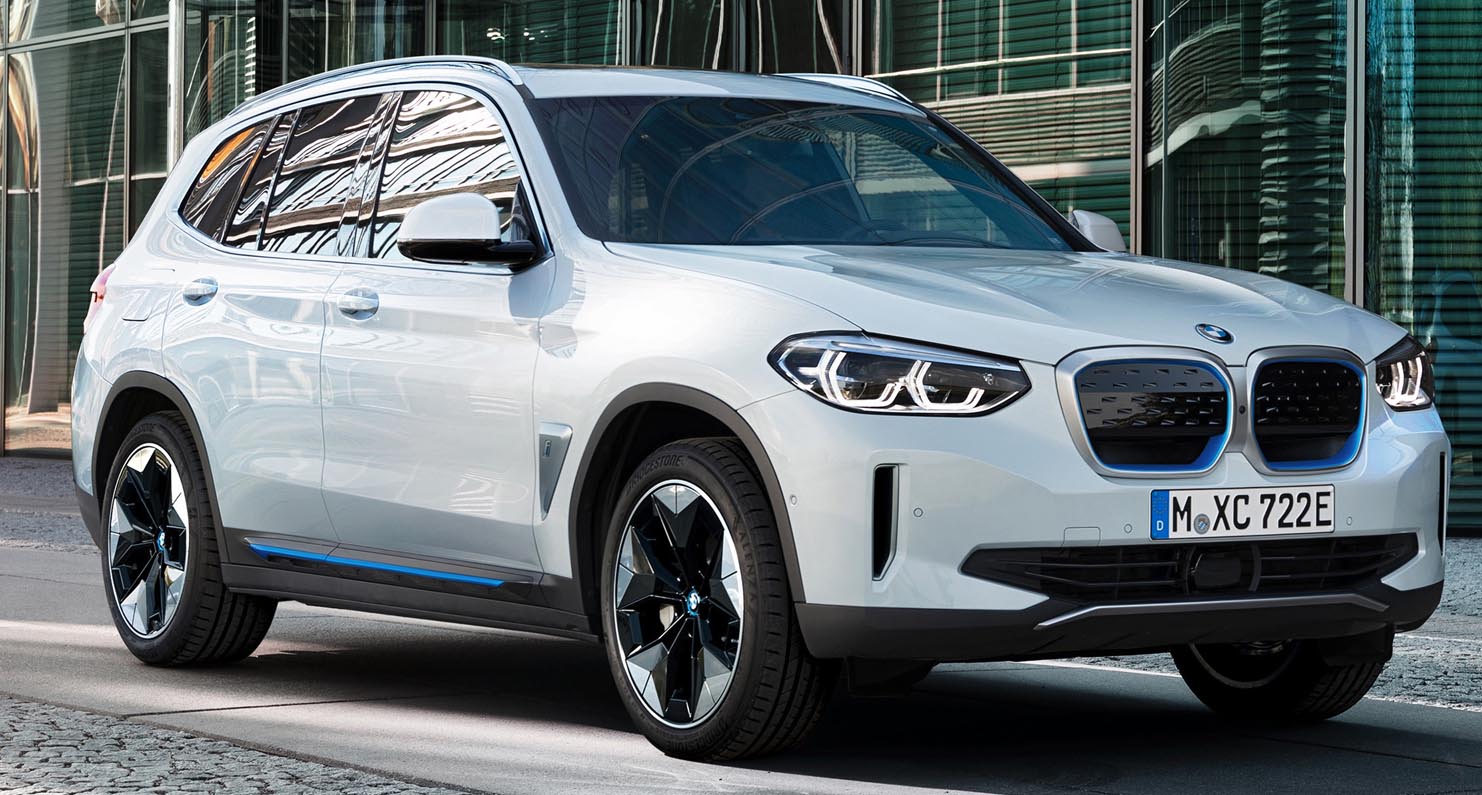
BMW Charging
As a pioneering force in the field of electric mobility, the BMW Group has been quick to make locally emission-free driving a more pleasurable experience by offering customers simple, convenient charging options. Key elements here have been the provision of innovative charging technologies, products and services, but also an unwavering commitment to expanding the public charging infrastructure. A diverse portfolio of solutions for charging the high-voltage battery when at home or out and about was unveiled back in 2013 when the BMW 360° Electric concept was launched alongside the BMW i3. The ongoing development of these products and services ensures electric mobility being an ever more convenient and user-friendly everyday experience.
The introduction of BMW Charging indicates the availability of an even wider choice of tailored charging products and digital services now. The BMW Charging product range is the only one of its kind in the world, addressing every conceivable electric mobility need. The charging products and services have been continuously expanded and updated since the BMW I brand was launched. The wide variety of solutions now offered under the umbrella of BMW Charging for vehicles with all-electric or plug-in hybrid drive systems underlines the all-embracing approach adopted by the BMW Group as it drives electric mobility forward.
Standard equipment for the new BMW iX3 in Europe includes the BMW Charging Card and a mode 3 charging cable for public charging stations. Customers in many markets will also receive a personal charging voucher, which can either be exchanged for a BMW Charging credit to be used at public charging points or used to purchase home charging products.
The expansion of the charging portfolio and the introduction of BMW Charging has also involved signing up strong partners to implement individual elements of the BMW Charging offering. These include the installation of charging hardware, provision of special green energy tariffs for charging and introduction of a Smart Wallbox with extensive connectivity and extended functionality.
Charging at home: bespoke offerings and package solutions for every need
For charging the car at home, BMW Charging offers everything BMW customers require – tailored to their particular needs and their charging situation.
The charging voucher included with the BMW iX3 as standard in many European markets allows customers to order for example the newly developed Flexible Fast Charger at no extra cost. Offered for the first time, the Flexible Fast Charger can be used to charge the BMW iX3 from a domestic socket or – with an adapter – from a powerful industrial socket. The market-specific adapters enable customers to charge the high-voltage battery of their BMW iX3 using the approximately six-metre-long Flexible Fast Charger cable at up to 11 kW (three-phase supply).
Should customers not yet have a suitable charging outlet, professional installation can simply be added to their order. The installation service is another element of the BMW Charging package and also includes the option of expert installation and the set-up of a Wallbox at the customer’s house.
The BMW Wallbox with a charging output of 11 kW is another charging solution available at a reduced price using the charging voucher for the BMW iX3.
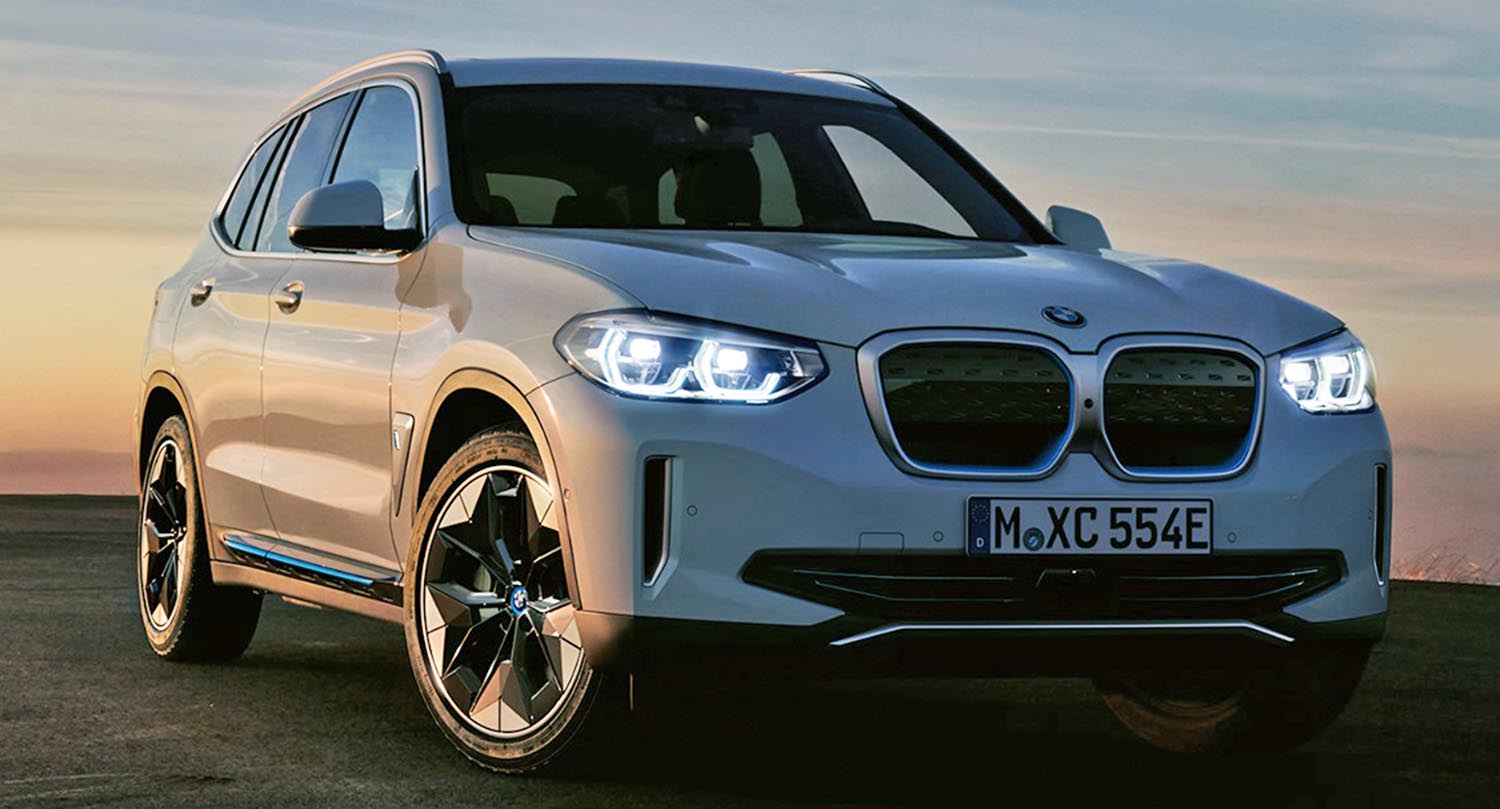
Latest-generation Wallboxes with an extended range of functions
The BMW Wallbox – a home car charging station offering attractive and competitive prices – is one of the products available to BMW iX3 customers. This fixed unit allows the BMW iX3 to be charged quickly, reliably and conveniently at up to 11 kW. In addition to its space-saving and compact BMW design, the BMW Wallbox also provides user-friendly cable management. Plus, customers can check the status of the BMW Wallbox whenever they wish via the LED indicator. An integrated residual current detection device enables simple and cost-effective installation. And the BMW Wallbox can be serviced and updated at any time via an app.
The Smart Wallbox is a new product available alongside the BMW Wallbox from local partners in each market. In addition to offering charging output of up to 22 kW, it allows customers to keep a precise record of charges initiated at home and the associated expenditure. This enables company car users to provide proof of the electric energy costs arising from the use of their vehicle and submit a claim to their employer or the tax authorities.
The Smart Wallbox can be linked up to smart home systems, for instance, enabling intelligent control of at-home charging e.g. for preferential use of self-generated solar power.
Universal solution for charging at home or work: the new Flexible Fast Charger
The charging voucher allows its holder to order the newly developed Flexible Fast Charger at no extra cost. This new type of power cable is being offered for the first time and can be used for charging at home or at work. Market-specific adapters make it possible to hook up the high-voltage battery in the new BMW iX3 to either a standard domestic socket or an industrial socket using the Flexible Fast Charger, which is approximately six metres in length. In this way, the car can be charged at a rate of up to 11 kW (three-phase supply).
A mode 3 cable for connecting the new BMW iX3 to a public charging point offering high-power charging is also supplied as standard.
Convenient charging on the go with the BMW Charging Card and special rates at IONITY fast-charging stations
BMW has been actively involved in the expansion of the public charging infrastructure from day one. As well as setting up charging stations on both the company’s own premises and public sites, it has also focused on creating a global network that makes the process of charging, payment and billing straightforward for customers. Today, the BMW Charging Card or a suitable app let customers top up their electric vehicle with power easily and conveniently using a simple billing model. They can do so at currently around 450,000 public charging points run by different operators all over the world. This constantly growing network represents a good solution for customers who are not able to install an adequate charging infrastructure at home, who would like to combine parking and charging (while shopping, going out for dinner, etc.) or who are planning to drive long distances – to holiday destinations, for example.
The BMW Charging network also incorporates high-power charging stations, including the fast-charging stations in Europe run by IONITY, a joint venture launched by the BMW Group and various partners and designed to facilitate long-distance electric mobility. IONITY operates a steadily increasing number of high-power charging stations along Europe’s key traffic arteries. The high feed-in power at DC fast-charging stations allows BMW iX3 drivers to replenish the high-voltage battery’s energy reserves in a short amount of time.
The BMW Group is one of the founding members of the pan-European IONITY fast-charging network. BMW iX3 drivers pay a particularly low rate (e.g. €0.29 per kilowatt hour in Germany) when charging their vehicle’s battery at an IONITY high-power charging station.
Innovative digital services for convenient electric mobility
The display and operating system fitted as standard in the new BMW iX3 is based on the BMW Operating System 7 and also comprises the BMW Intelligent Personal Assistant which, when asked, will provide useful tips for even more efficient driving. The BMW Digital Key for iPhoneswill also be available for the BMW iX3.
In addition, the new BMW Maps cloud-based navigation system is additionally capable of exceptionally fast route and arrival time calculations, performed dynamically using precise real-time traffic data transmitted at short intervals. Drivers can enter any word to search for a destination or, easier still, use voice commands.
Numerous digital services from Connected Charging already familiar from the BMW i3 are also available to make journeys easy to plan, with the amount of range remaining always clearly indicated – e.g. by means of a blue circle in the map view.
The Remote Services can be used to control the charging process, the pre-heating function and the pre-conditioning function remotely. Added to which, as well as calling up information on areas such as charging status and range, customers can relay the data to a smartphone or any other personal device via the app. Drivers can find a clear evaluation of all completed charges – at home or during a journey – in the app. And should there be any kind of disturbance in the charging process, they are alerted by push notification.
When the driver selects a public charging station, the navigation system will also show them recommendations for hotels, restaurants, cafés, attractions or cultural venues in the area so that they can make best possible use of the time the car is being charged. The availability of nearby charging stations is immediately visible either in the list of stations or in the map overview thanks to a colour indicator. When searching for charging stations, customers can set a filter for fast-charging facilities.
New functions allow mid-journey battery-charging stops to be automatically factored into the route planning of longer trips, and additional information is provided on the stop and at the charging stations. The system also suggests the quickest overall route to the driver’s destination. But whichever route they choose, the exact and detailed route planning function provides an accurate estimation of their arrival time.
